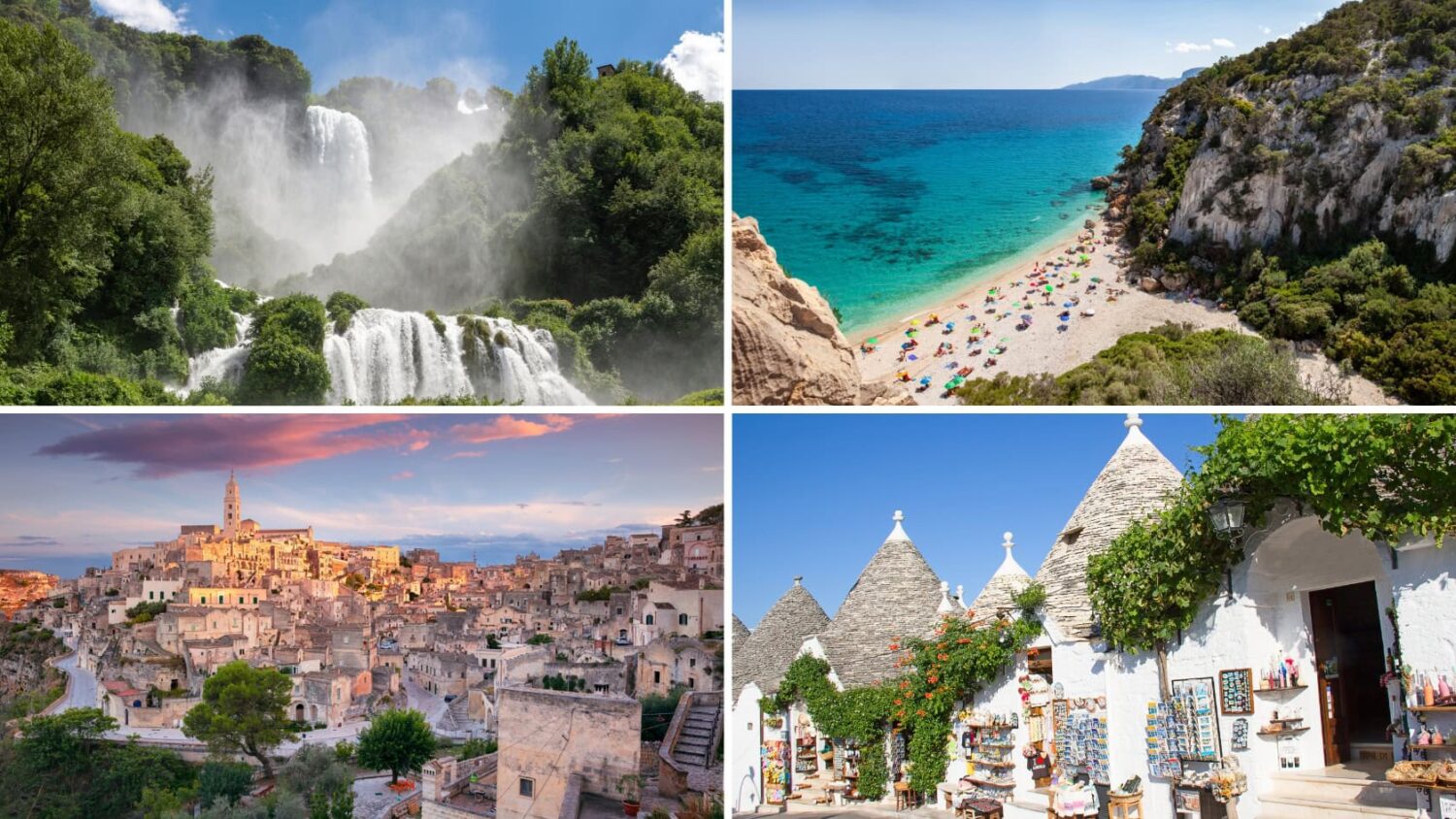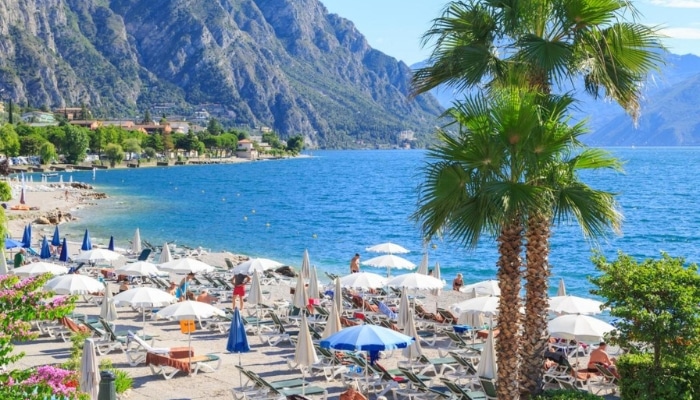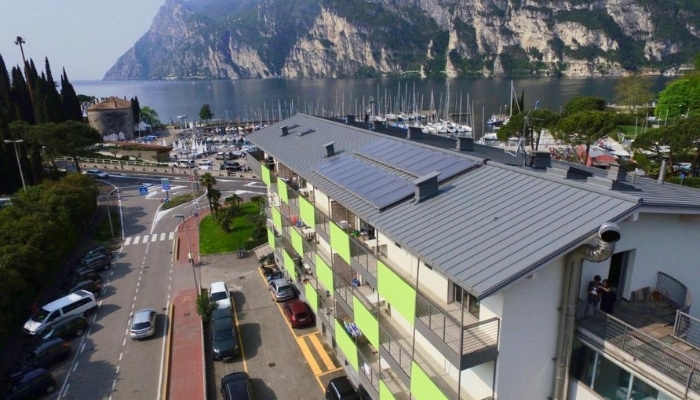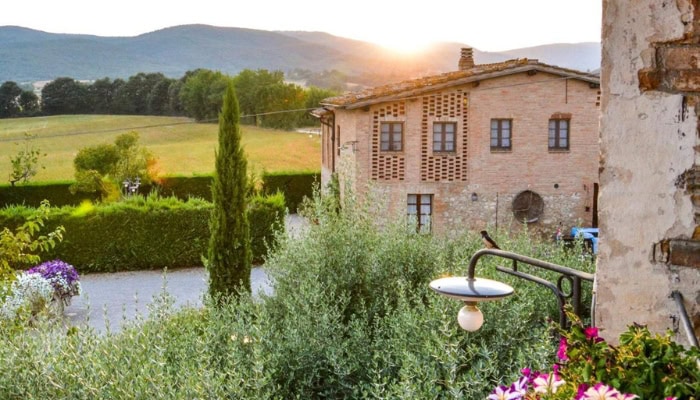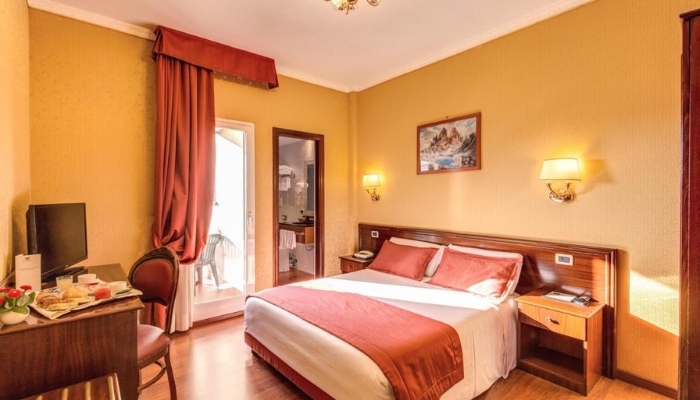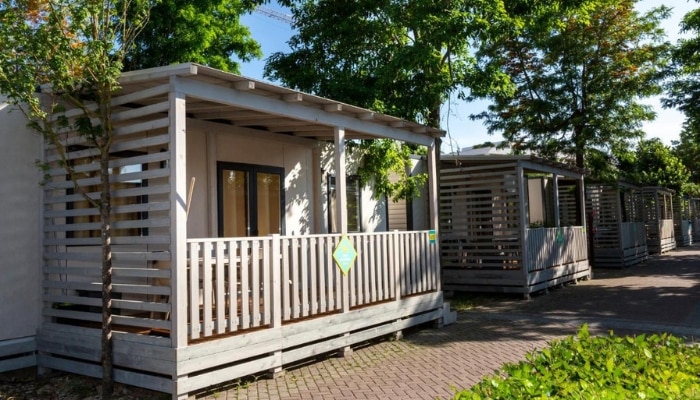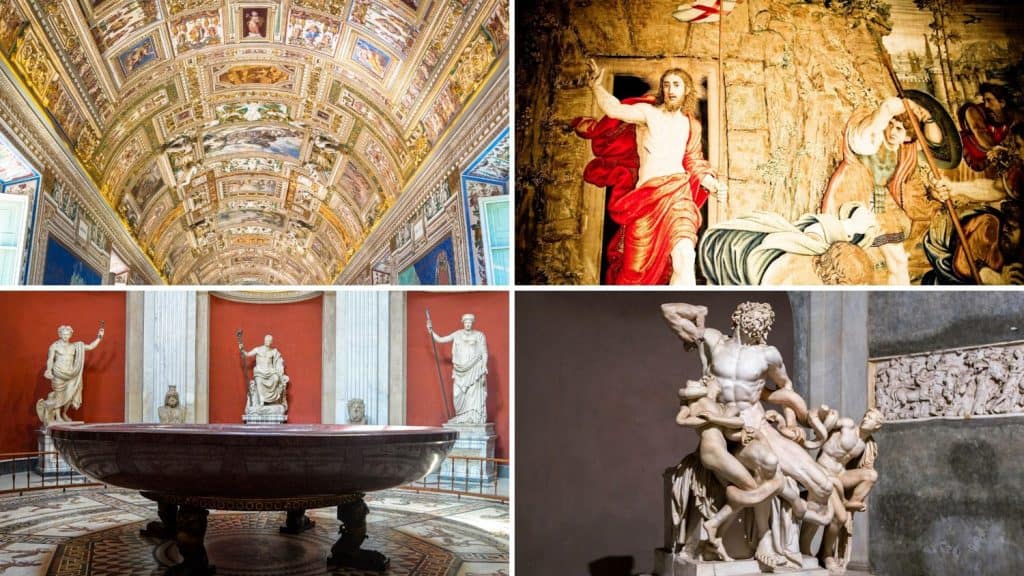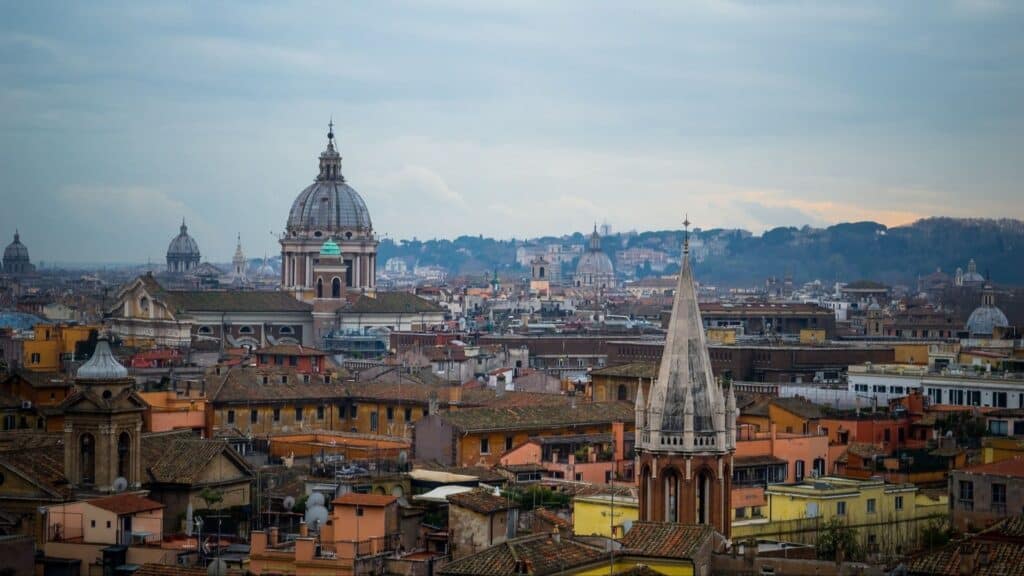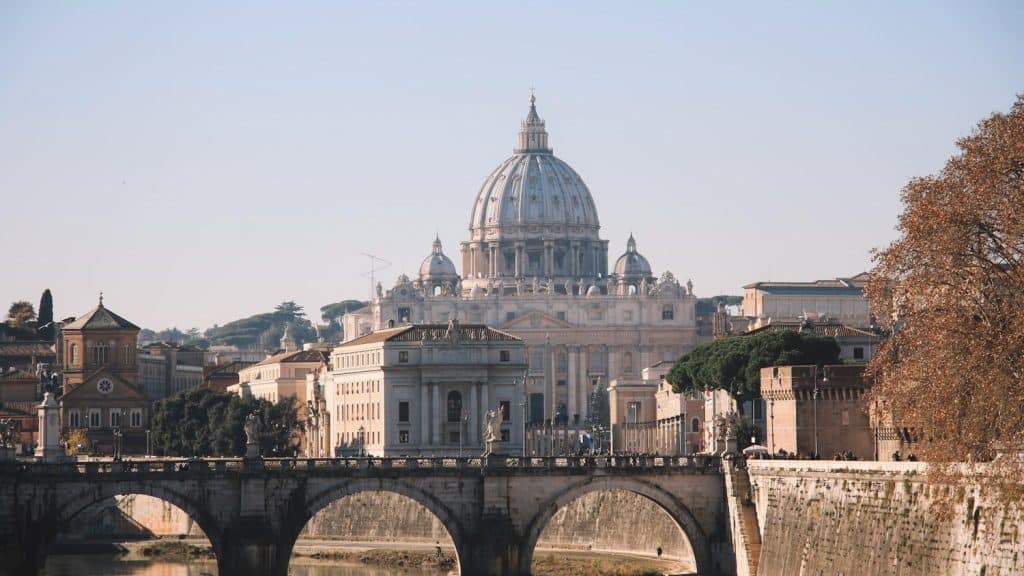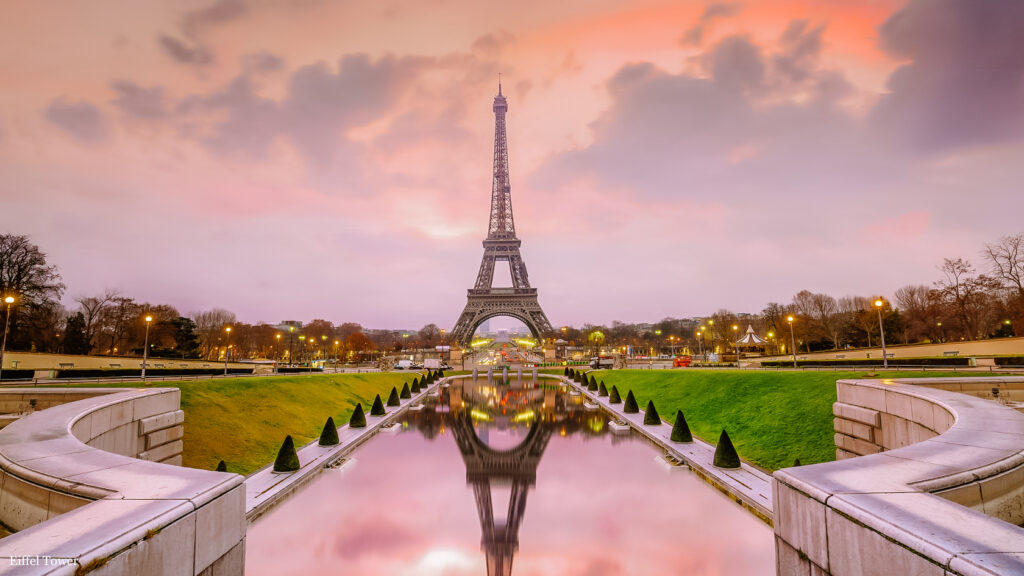What are the most beautiful places to visit in Italy? What not to miss? Here are 26 tips on the best things to do in Italy.
It’s like a seesaw with the Italian landscape. Vineyard meadows with wide views, dramatic peaks of the Alps and the Apennines rising from behind them, which are then cut off by beautiful, long beaches.
One day you’ll be sunbathing with gelato on the beach, the next day you’ll be working up a sweat in the mountains, and the third day you’ll finish with a glass of wine overlooking the Tuscan hills. Italy is a country of endless possibilities.
Join us for a look at the most beautiful places to see and visit in Italy. There are also links to other articles where you can find out more about the places and cities.
Things to do in Italy – Map
HOW TO USE THIS MAP: Above you will find a detailed map of Italy. Click at the top left of the map to see separate layers with highlighted locations. You can hide and show the different layers or click on the icons on the map to see the things to do in the Italy guide. If you want to save the map, star it. For a larger version, click on the icon in the upper right corner.
Things to do in Italy: Best places to see
Things to do in Italy: Dolomites
When we first arrived in the Dolomites, we absolutely fell in love with them. Imagine limestone-coloured rocks combined with vast green meadows and forests. Some rock formations form a perfect panorama, some stand out from the landscape suddenly and impressively.
Spectacular peaks are interspersed with turquoise lakes and lush meadows where you can walk for hours on easy trails. The Dolomites are a mountain range for everyone, adrenaline enthusiasts and families with children.
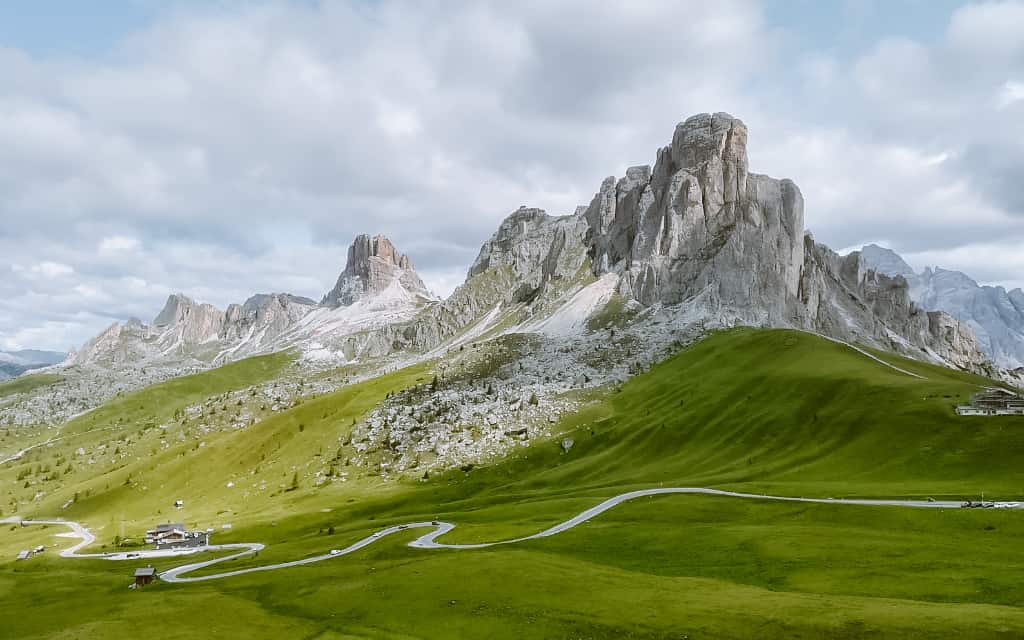
Visit the iconic peaks of Tre Cime, the beautiful lakes of Lago di Braies, Lago di Sorapiss or Lago di Carezza, the Val Gardena valley or the mountain passes of Passo Sella, Passo Pordoi, Passo Giau or Passo Falzarego with their numerous wartime remains.
☞ Learn more about the Dolomites: Get inspired by the most beautiful places, to visit in the Dolomites. Find out all about the Dolomites in our detailed Dolomites guide. In the articles you will find links to other places in the Dolomites – Tre Cime, Lago di Braies and more.
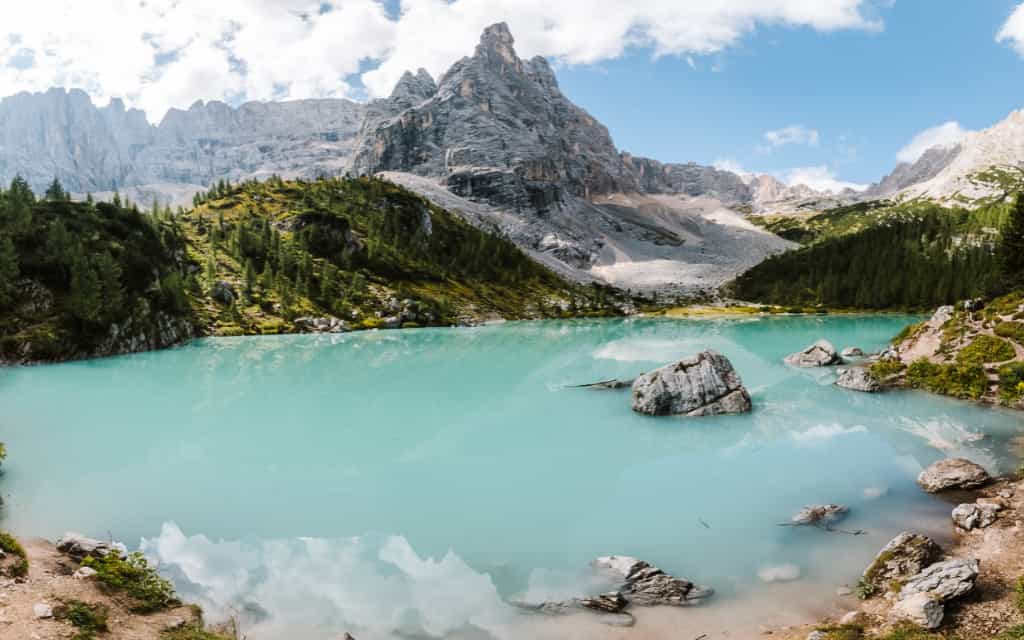
Things to do in Italy: Milan – Lago di Como – Lago di Maggiore
Milan
Milan is the capital of Lombardy and is the perfect destination for a long weekend.
Visit the Duomo di Milano, one of the most beautiful cathedrals in the world, get lost in the streets of the Brera district and enjoy a stroll along the Navigli Grande Canal. There are so many great things to do in Milan.
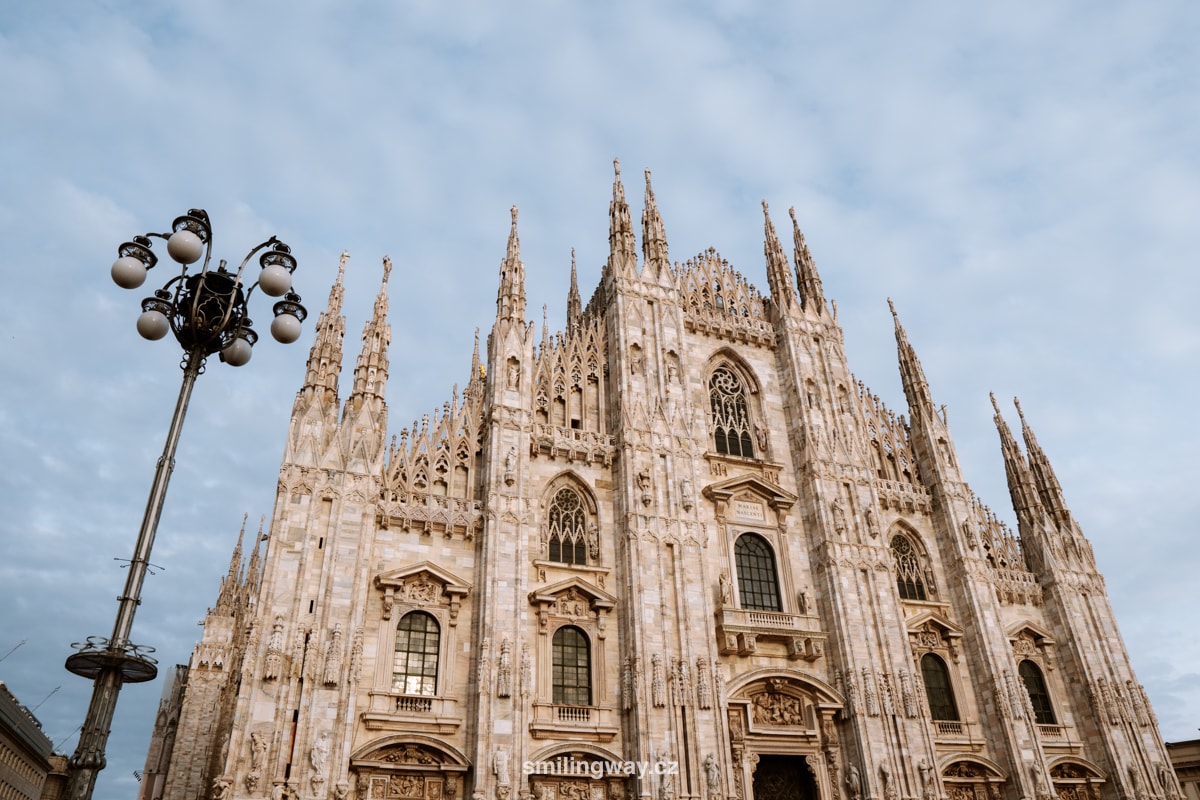
In addition, Milan is ideally located for exploring Lombardy. Hop on the train and head to the beautiful historic towns in the area or to Lago di Como, which we’ll talk more about in a moment.
Getting to Milan: Milan is easily accessible by an hour’s flight from Prague – there are several daily flights to choose from throughout the year.
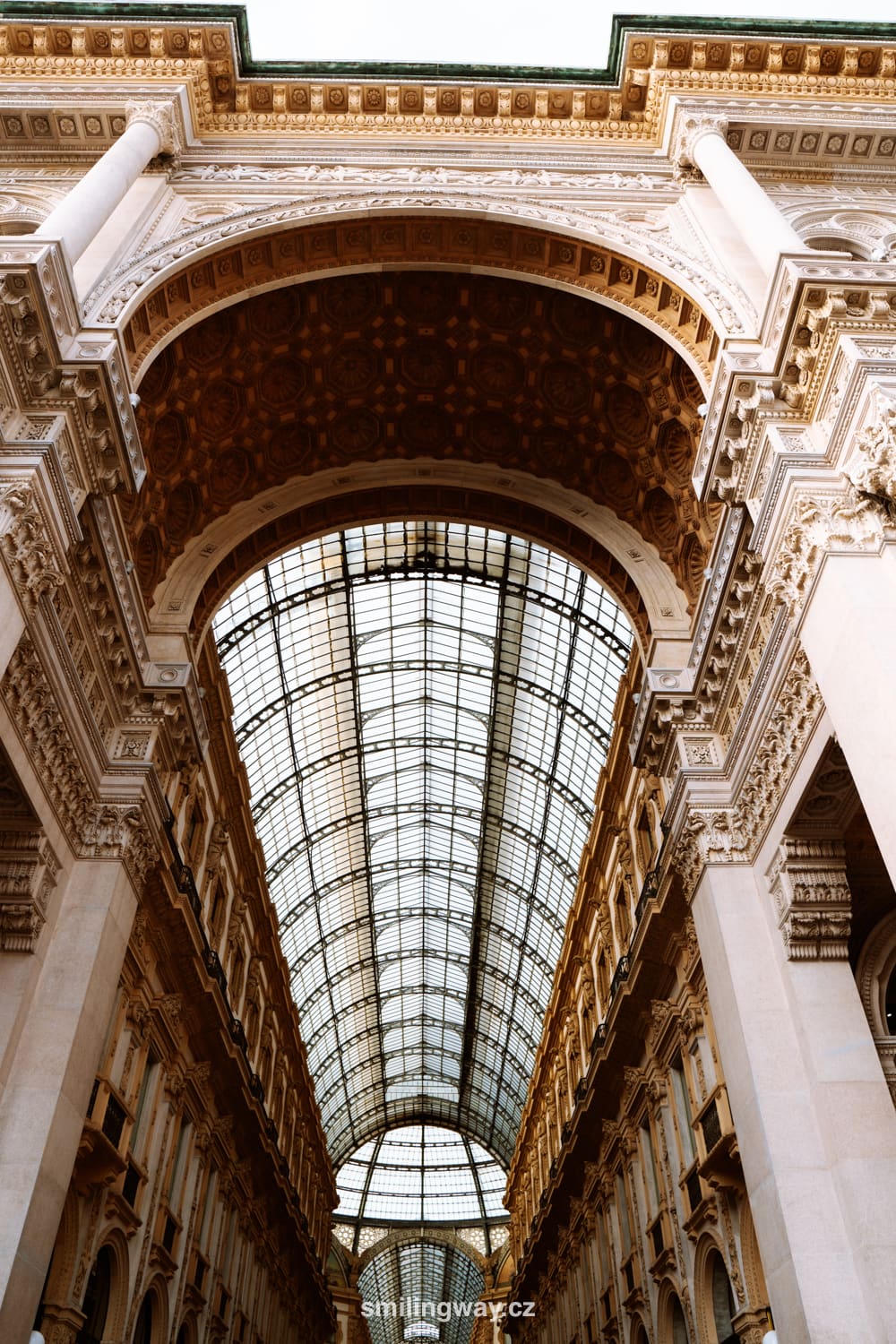
☞ More information about Milan: Read the previous article on what to see in Milan. To help you plan your trip to Milan, we’ve created an itinerary for 3 days in Milan Including a map. Do you have less time? Check out the itinerary for Milan in 2 days or the itinerary for 1 day in Milan.
Lago di Como
We visited Lago di Como a few years ago and we will definitely visit again with our children.
Lago di Como is a magnificent alpine lake, from which the alpine peaks rise suddenly and impressively, providing spectacular views. The lake is home to opulent villas (including George Clooney’s), with gardens full of flowers.
Its shape resembles an inverted Y and right in its heart lies the famous town of Bellagio, known as the pearl of Lago di Como.
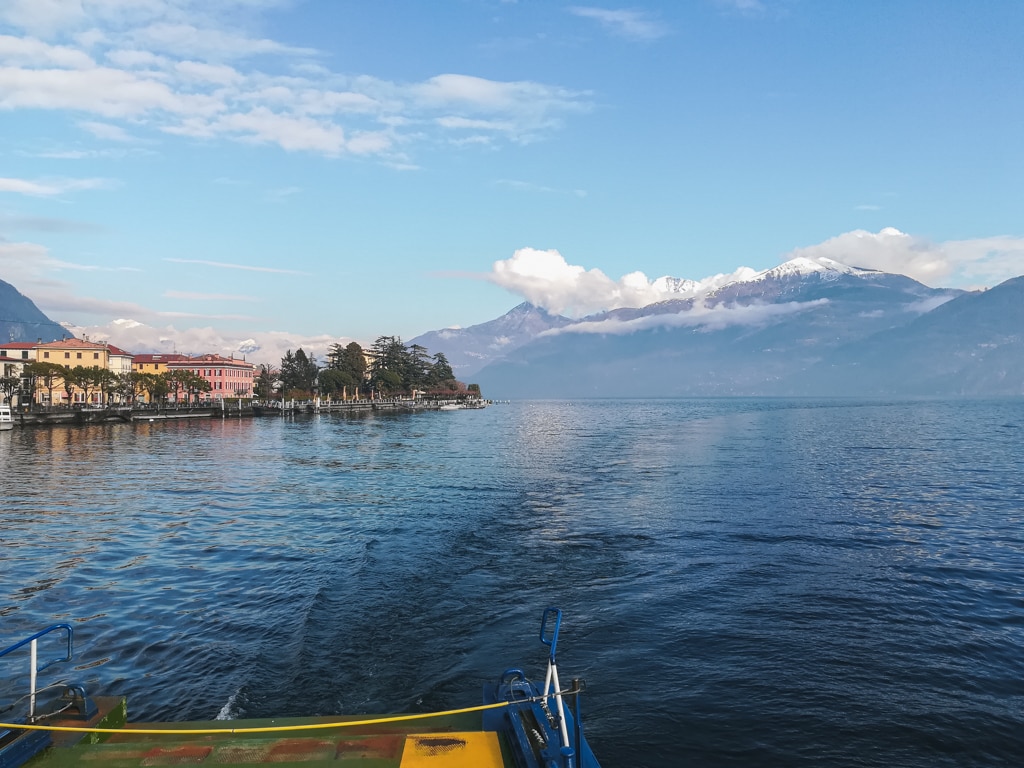
The town of Bellagio is definitely worth seeing, but I personally recommend visiting Varenna, a town of Roman origin. It has a quieter atmosphere and we were absolutely charmed. Board the ferry and take a cruise on the lake.
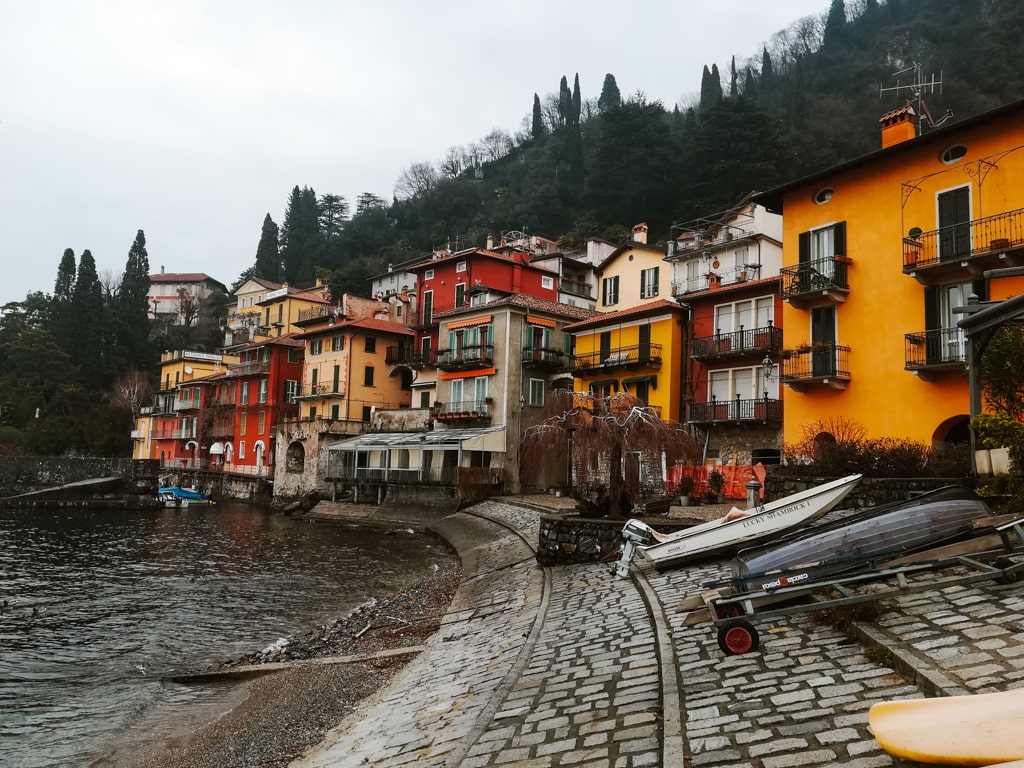
How to get to Lago di Como: As well as by car, Lake Como is also accessible by public transport. A direct flight from Prague will take you to Bergamo Airport, where you will take a train to Lecco, a town located at the tip of the lake. From here, you can take the next train or ferry, depending on where you are going.
☞ For more information about Lago di Como: Read the previous article on what to visit at Lago di Como.
Lago di Maggiore
Lake Maggiore is considered by many to be one of the most beautiful lakes in the world. You can find it an hour northwest of Milan.
Visit the Borromean Islands, which consist of 3 islands – Isola Bella, Isola Madre and Isola dei Pescatori. The island of Isola Bella is famous for its garden with rare exotic plants and beautiful flowers. In front of the garden is an ancient Baroque palace with works of art, tapestries, statues and mosaic grottoes.
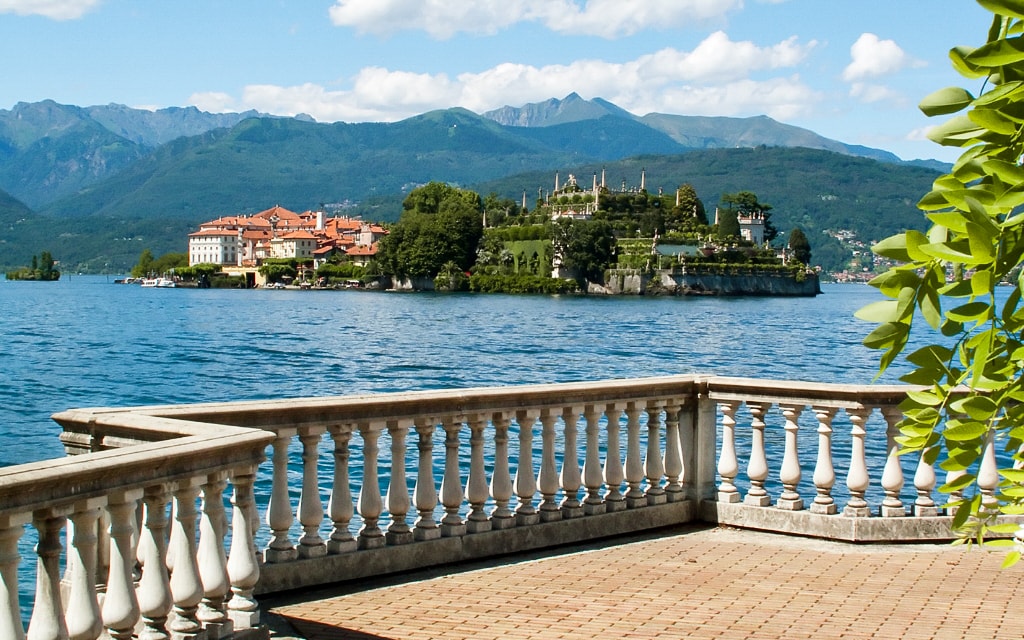
Madre Island is the largest of the Borromean Islands. Its area is covered by a botanical park in the English style, which consists of plants brought from distant countries and acclimatized to the local conditions.
Isola dei Pescatori is the only permanently inhabited island with a population of 50 people. It’s a small fishing island, which you can tell by the houses – they have large balconies just for drying the fish they catch. The village consists of narrow, winding streets that lead to a promenade with many restaurants overlooking the lake.
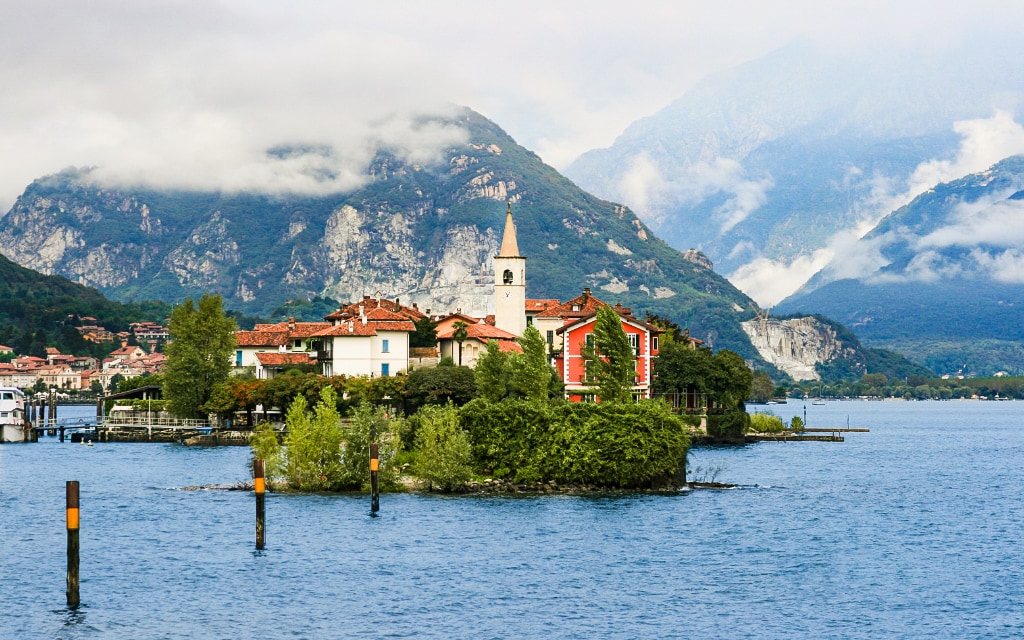
Getting to Lake Maggiore: The lake is easily accessible by direct train from Milan.
☞ More information about Lombardy: Check out the most beautiful places in Lombardy. Don’t miss the beautiful medieval town Bergamo or elegant Milan. If you want to enjoy the beautiful countryside, head to the lake Lago di Como.
Things to do in Italy: Verona – Lago di Garda
Verona
Verona is a city in northern Italy famous for Shakespeare’s Romeo and Juliet. It’s similar to Venice, but without the canals and the onslaught of tourists (although there are plenty of tourists too). On your visit, you can’t miss the Ponte Pietra Bridge, Piazza delle Erbe, the Basilica di San Zeno Maggiore and Juliet’s house with its balcony, where most tourists flock.
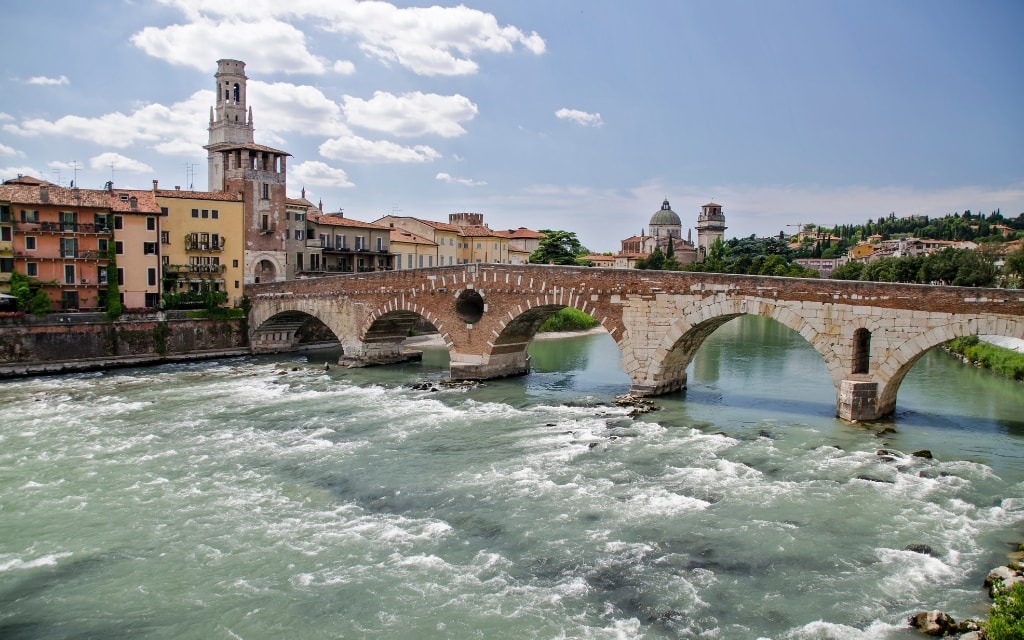
Verona is an ideal day trip tip if you’re holidaying on Lago di Garda, which is only half an hour’s drive away.
☞ More information about Verona: Check out The most beautiful places to visit in Verona (including useful information on entrance fees and opening times). Also included is a guide with additional tips (transport, accommodation, food, Verona Card). Itinerary for 1 day in Verona will help you plan your itinerary.
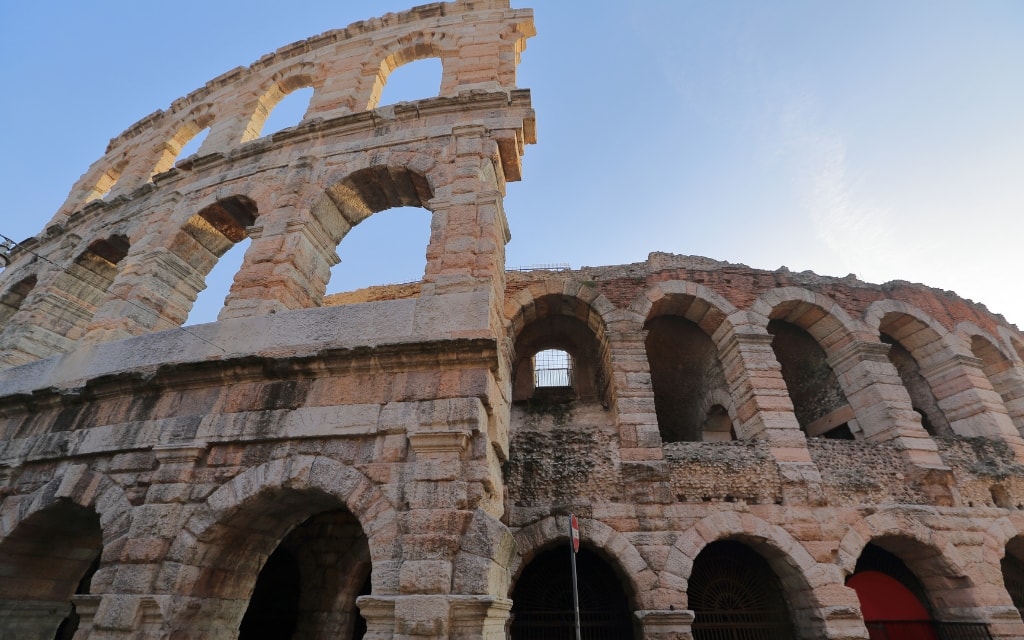
Lago di Garda
Welcome to Lago di Garda in Italy, an alpine lake with crystal clear waters that are lined with charming towns and imposing alpine peaks.
Enjoy a swim in the crystal clear water or a ferry ride, follow one of the many hiking or cycling trails and soak up the charm of the colourful towns with small harbours where you can contemplate and watch the surrounding bustle. There are so many great things to do at Lago di Garda.
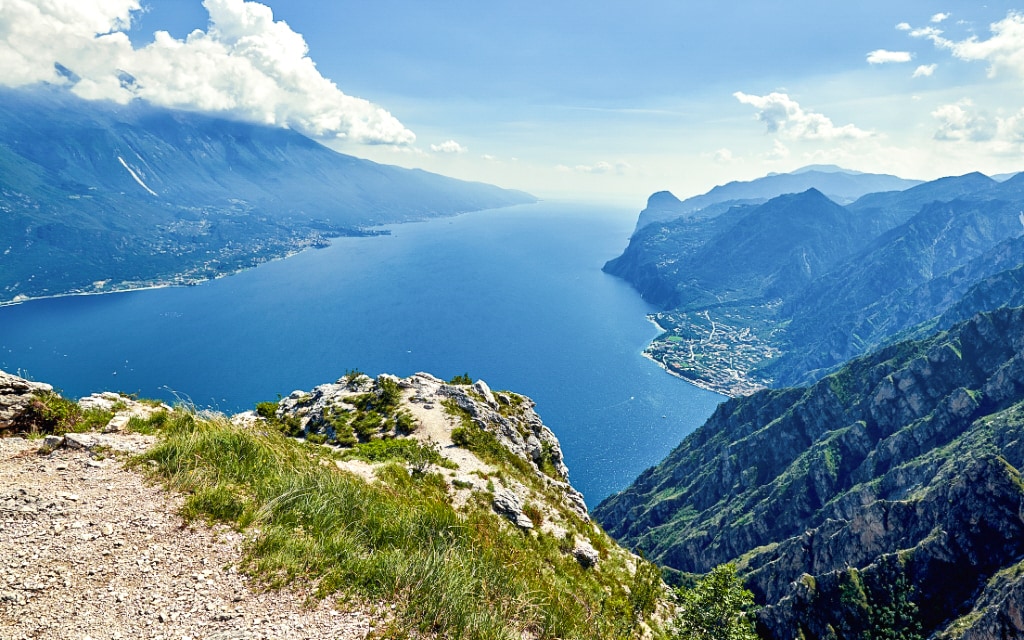
Worth seeing are the town of Sirmione, the ruins of the Roman villa Grotte di Catullo, the village of Malcesine with the church of Castello Scaligero or Riva del Garda and Castello di Arco a short distance away. With children, don’t miss the famous Gardaland park in the south-east of the lake.
☞ More information about Lago di Garda: The most beautiful places to visit near Lago di Garda.
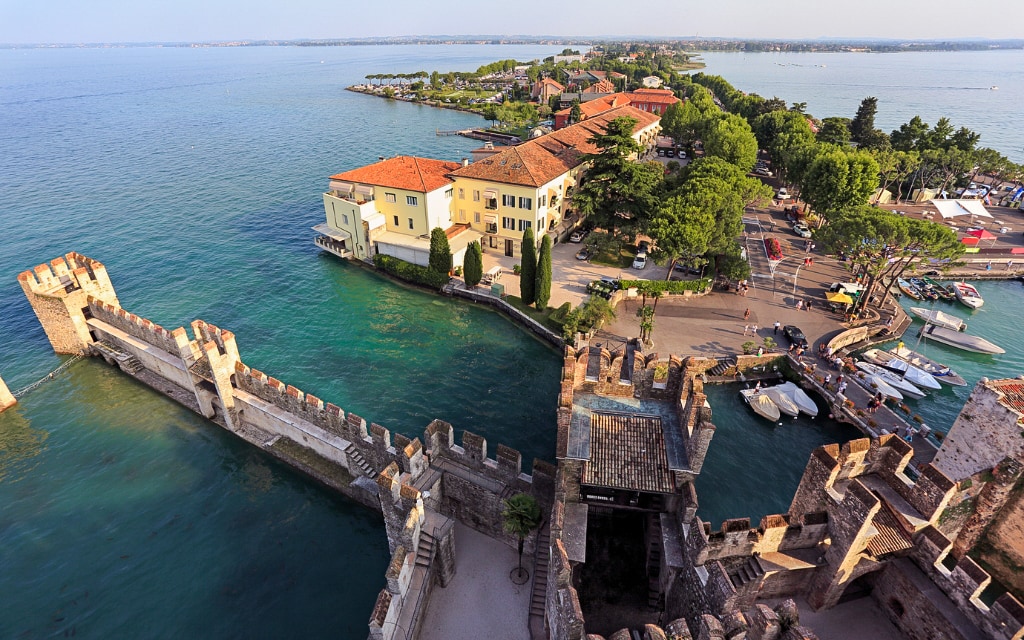
Accommodation Lago di Garda 😴
Things to do in Italy: Calabria
In the very south of Italy you’ll find the region of Calabria, a place famous for its beautiful beaches, dramatic cliffs, hidden coves and interesting rock formations.
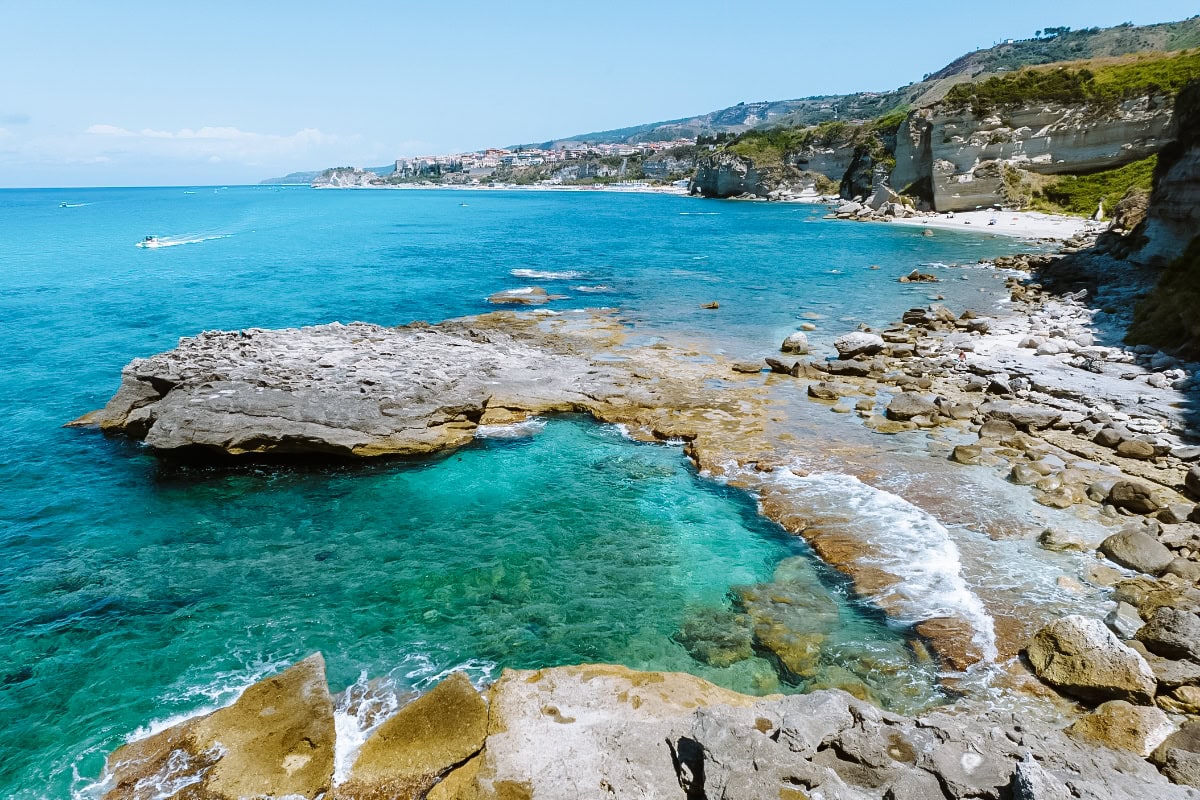
What to visit in Calabria? For example, the Piedigrotta Church, the city on the rock of Tropea, the southernmost coast of Europe, Lungomare Falcomata, the Capo Vaticano or the beautiful beach of Spiaggia dell’Arcomagno with its rock arch.
How to get to Calabria: The best option is a car, with which you can explore the whole region, the beautiful beaches and the historical monuments.
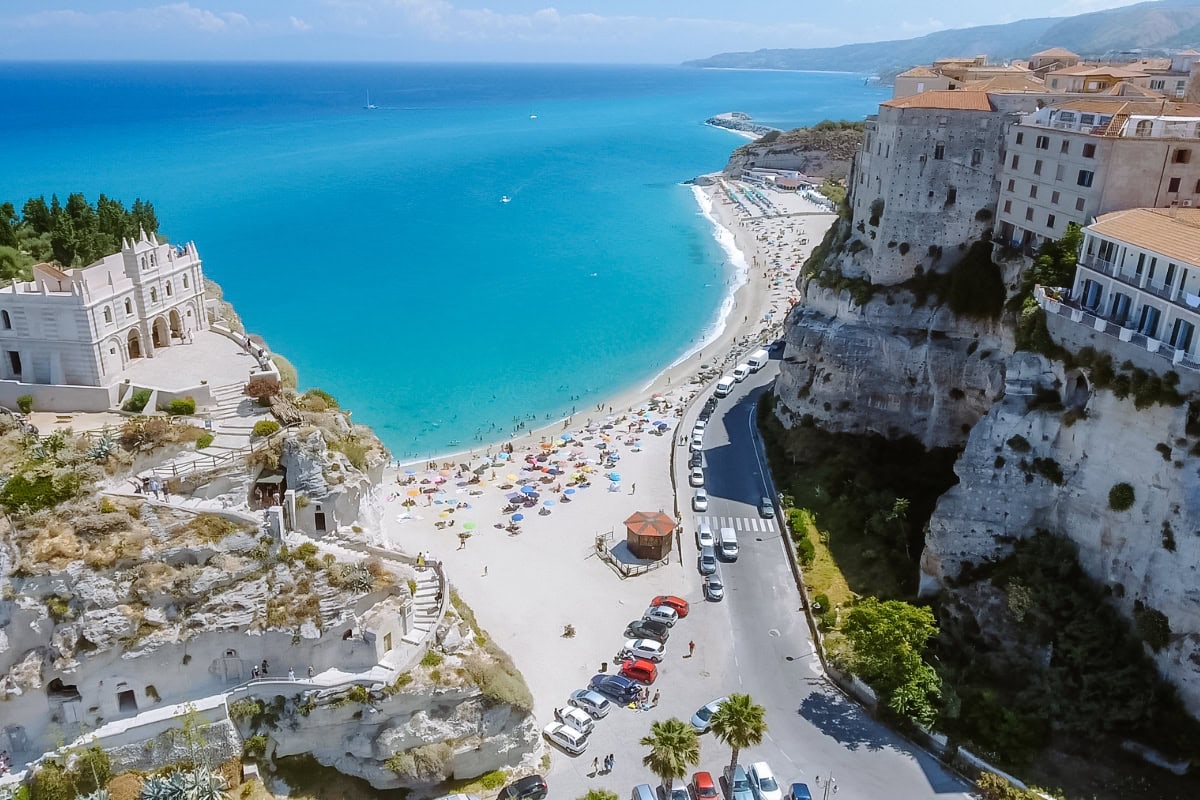
Things to do in Italy: Puglia
The Puglia region forms the “heel” of Italy. You can imagine it as a long coastline lining the Adriatic Sea, with sandy beaches, rich history and unspoilt nature. The largest resort is Bari, from which you can take a boat trip to the Balkan Peninsula.
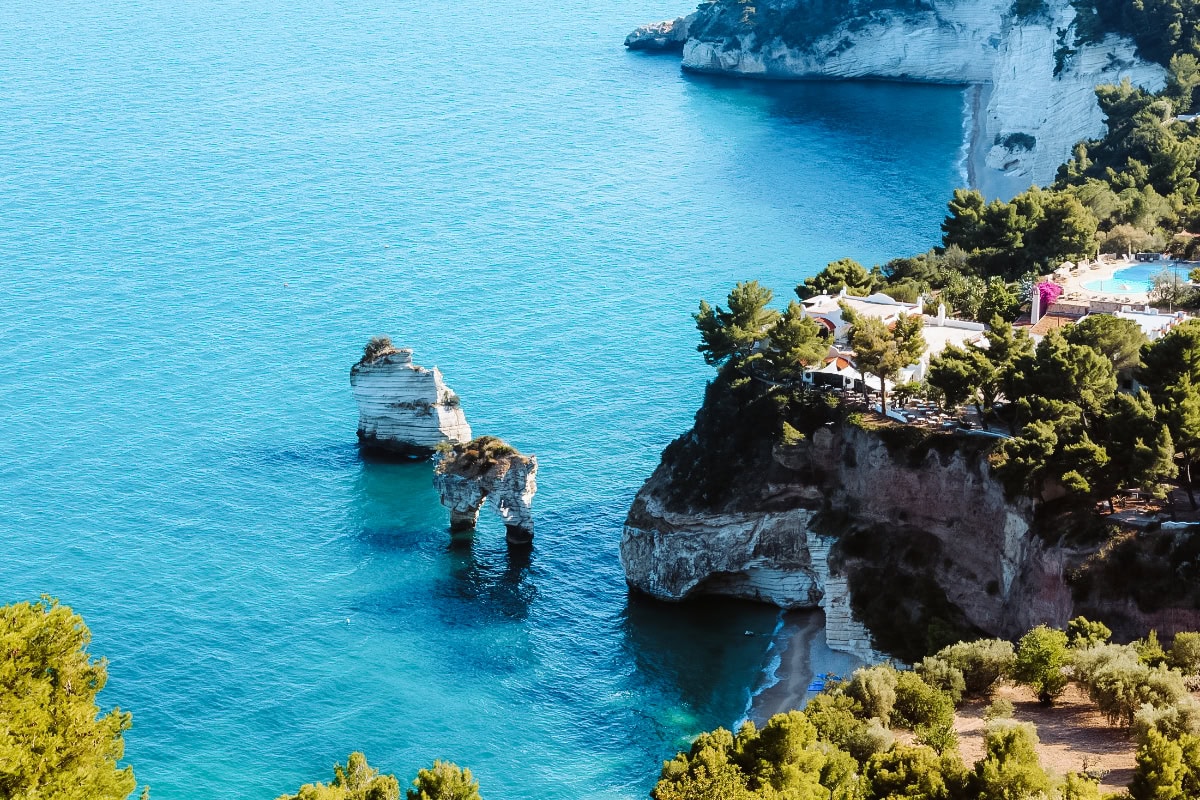
The region includes the Gargano National Park, which covers almost the entire Gargano peninsula. Karst formations, caves and quarries are typical for the whole area. There are beautiful beaches and cliffs. The smaller historic towns of Vieste and Peschici are worth a visit.
What else to see in the Apulia region? For example, the town of Alberobello with its iconic houses. Other towns in the region worth seeing include Polignano, Monopoli and the beautiful rock formations of Torre Sant’Andrea.
How to get to Puglia: In the season from spring to autumn, there are several direct flights a week from Prague to Bari, from which you can easily reach by public transport or by rental car In the region by car or car rental.
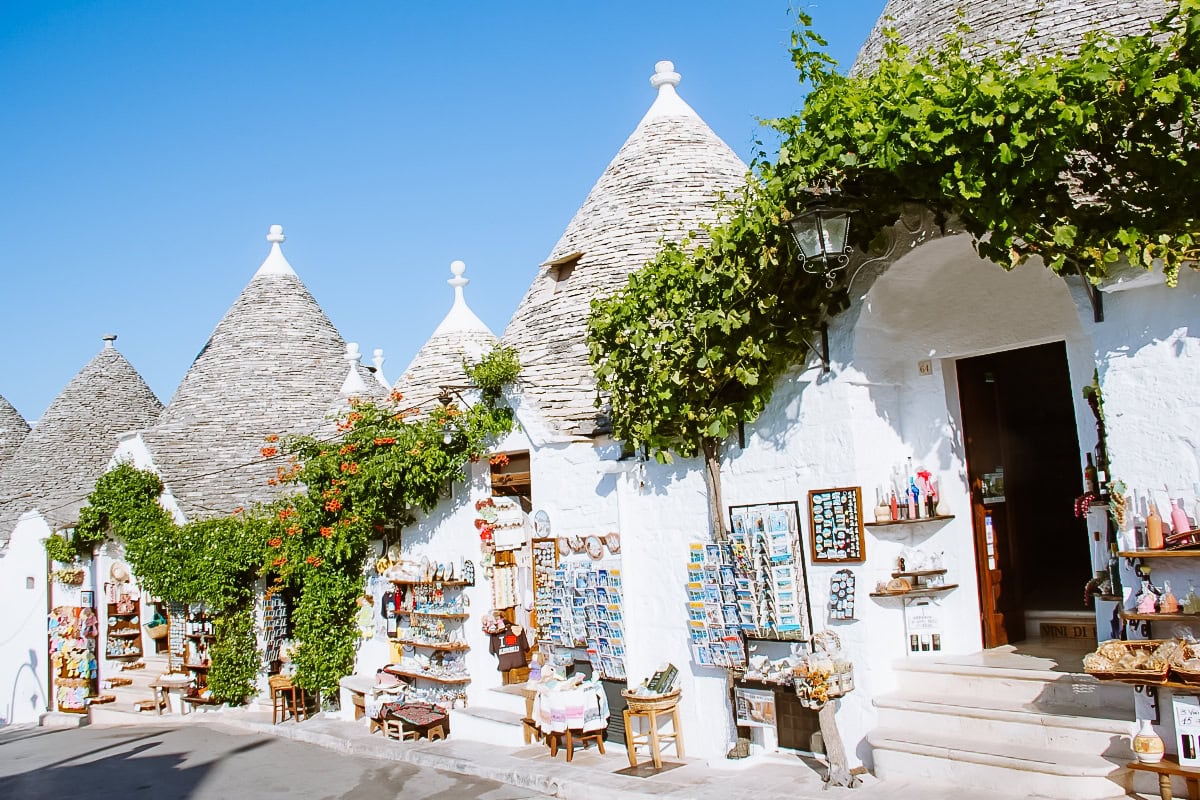
Things to do in Italy: Matera
Matera is one of the most interesting and oldest towns in Italy, famous for its “Sassi”, cave dwellings carved into the rock massif. The city is located in the Basilicata region of southern Italy and is a UNESCO World Heritage Site.
Matera’s history dates back to prehistoric times, making it one of the oldest continuously inhabited places in the world. Sassi di Matera is known for its unique architecture, where houses, churches, monasteries and other structures are carved directly into the rock.
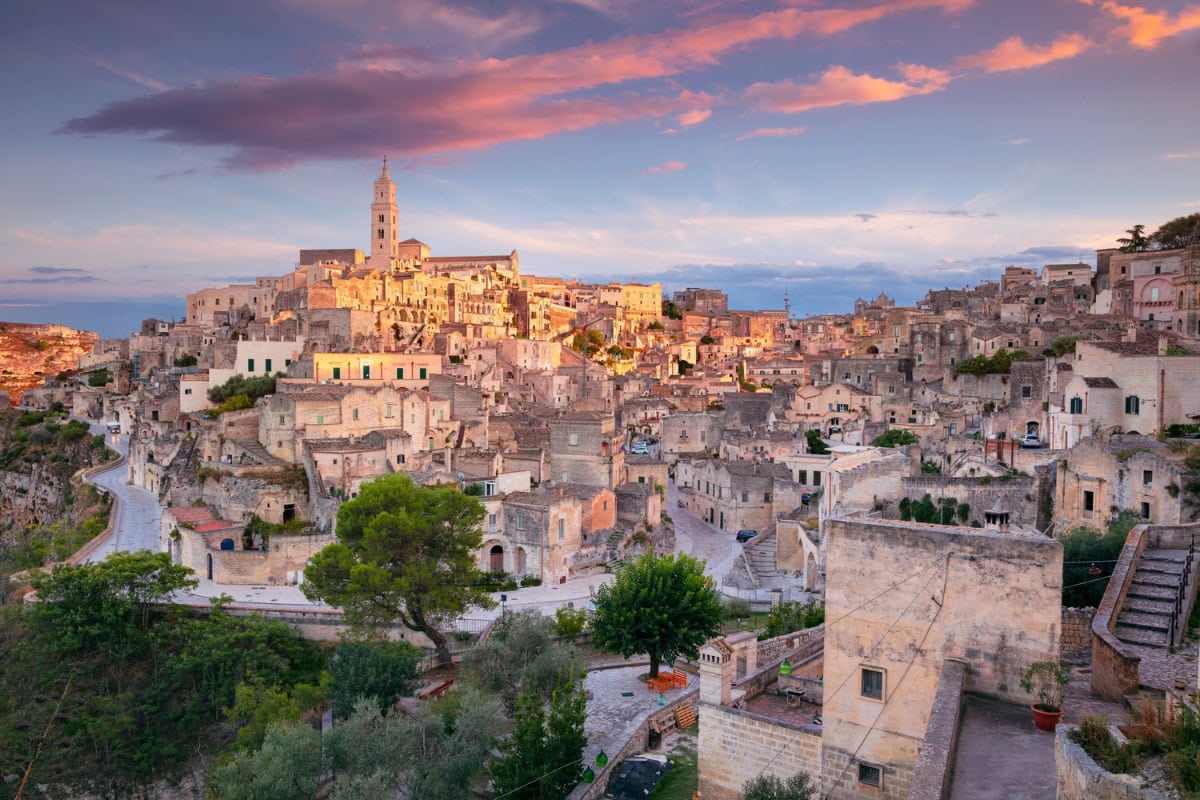
Once considered a symbol of national shame because of its poor living conditions, the area is now a popular tourist destination where several biblical films have been filmed, including Mel Gibson’s The Passion of the Christ.
Getting to Matera: Matera is reachable in an hour by bus from Bari.
Things to do in Italy: Padua – Venice
Padua and Venice are cities in northern Italy, less than half an hour apart. Venice is crowded with tourists and Padua lives in seclusion because of them.
Padua
Padua is a city that lives in the shadow of the more famous Verona and especially Venice. But this has an advantage – it’s not a headache and you can explore the historic part of the city in peace. If you are planning a holiday in Venice, at least make a trip to Padua. You’ll be thrilled.
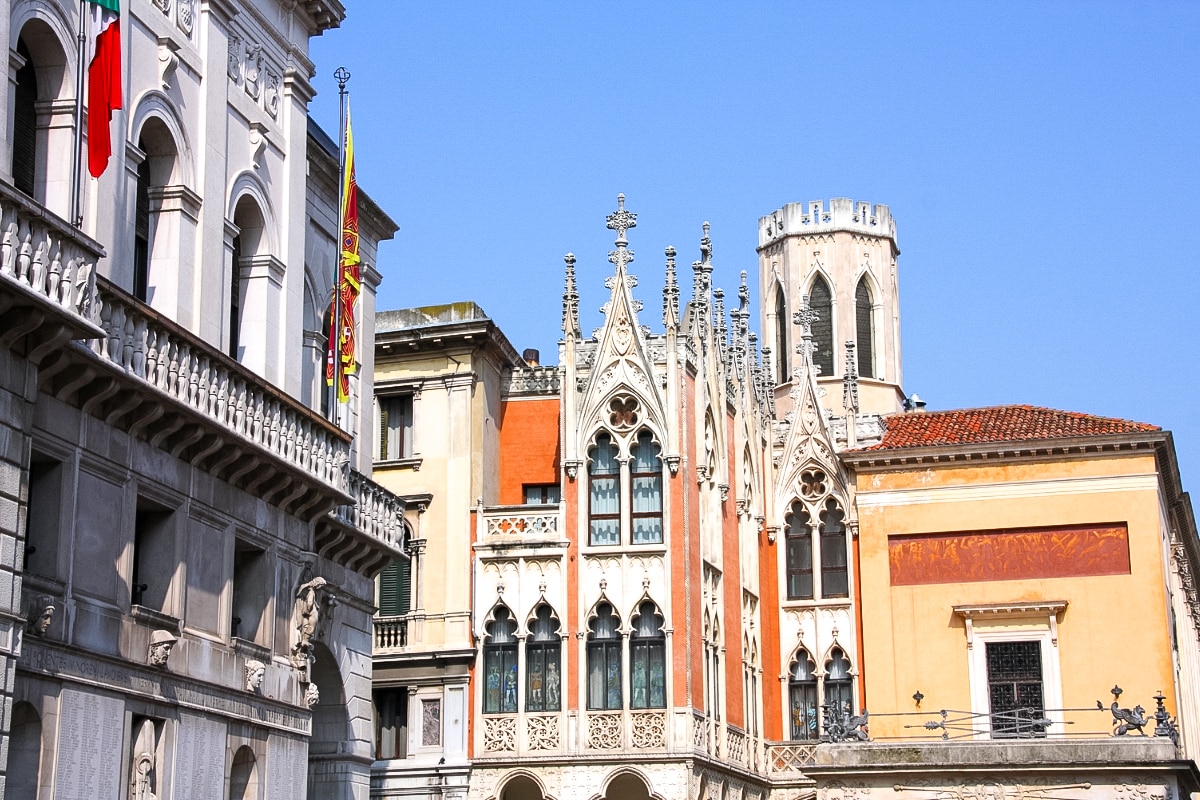
Padua was founded even earlier than Rome. Moreover, at the end of the First World War it was the second richest city in Italy after Rome. It has a rich artistic and historical heritage with numerous preserved monuments.
Enjoy the Basilica of St. Anthony, the San Giusticia Cathedral, the Palazzo della Ragione with its magnificent medieval town hall, the Scrovegni Chapel with its frescoes (said to be the first masterpiece of the Italian Renaissance), the botanical garden of the University of Badua, the oldest in the world.
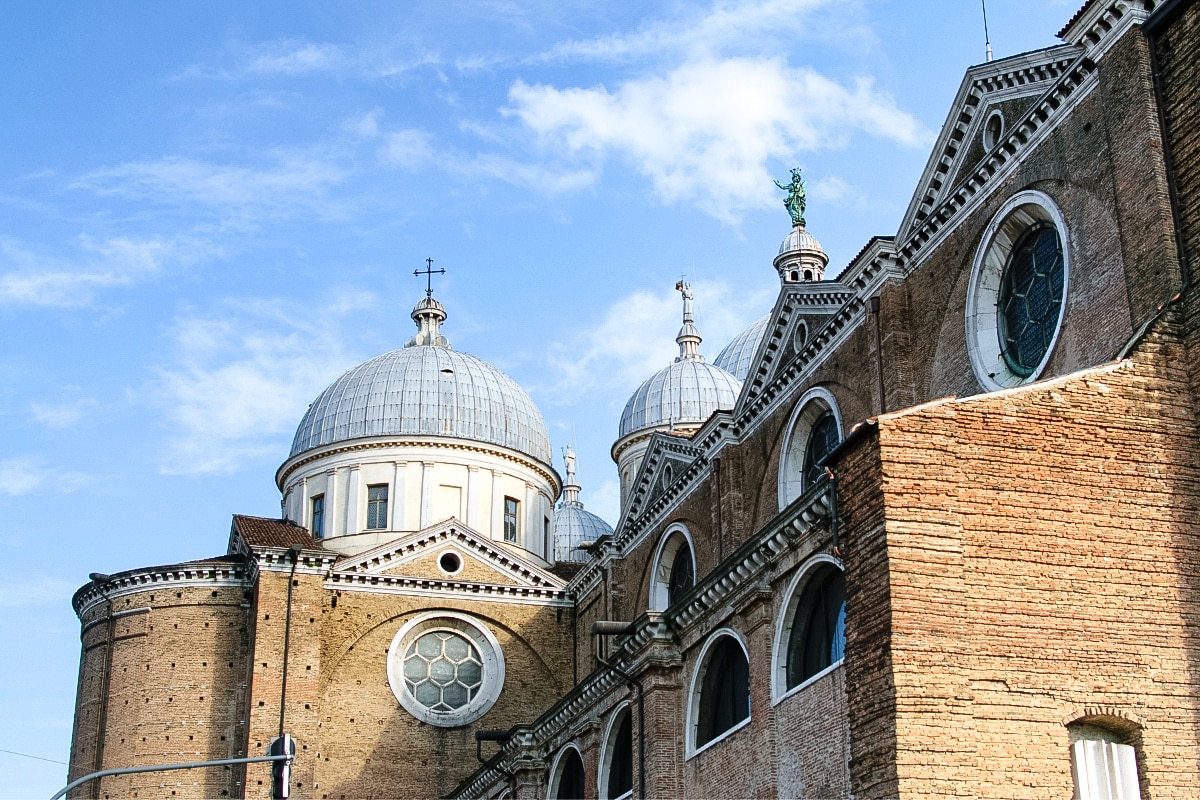
Venice
Venice is an ancient city built in a lagoon, full of historical monuments, art, small shops and restaurants. It’s also one of those towns that you’ll enjoy more in the off-season, as tourists abound.
But it’s worth it! Venice is absolutely beautiful. You can lose yourself in the local streets for hours, constantly discovering new and new corners.
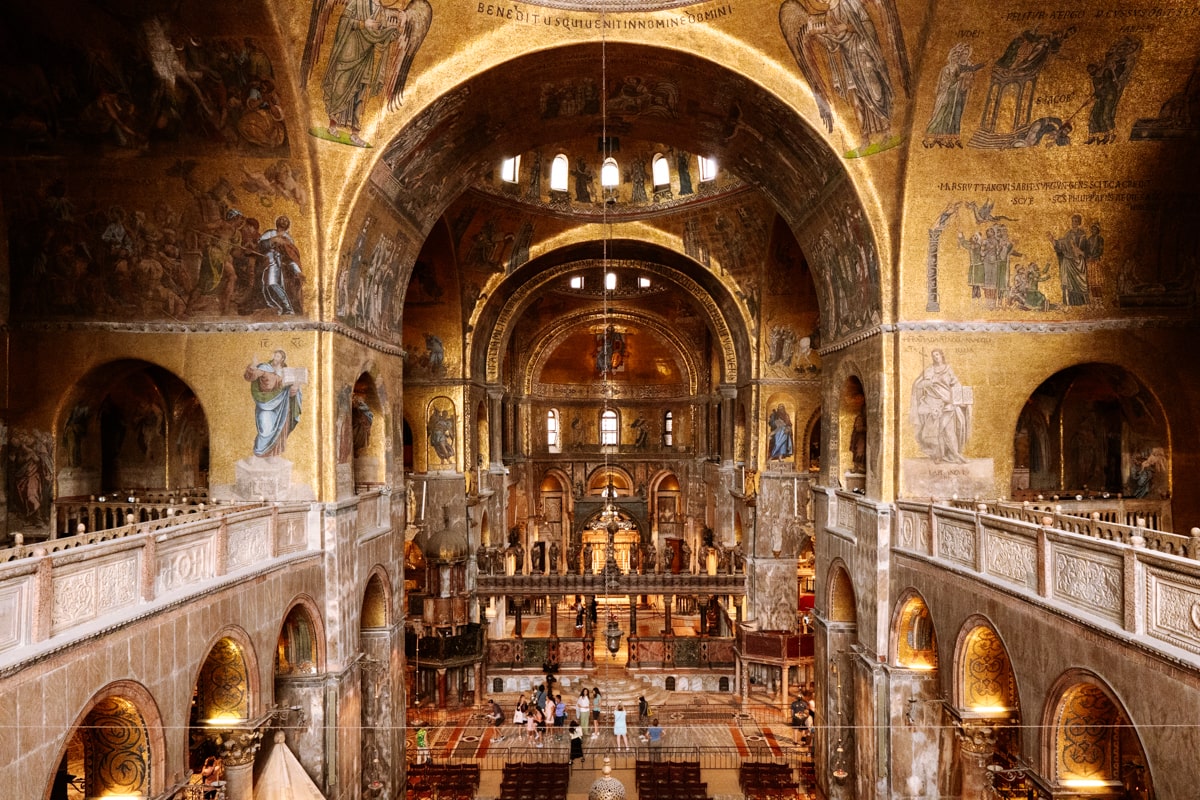
Between the 13th and 18th centuries, Venice was one of the richest commercial centres in Europe, which is why most of its buildings date from this period. The city has so much strict laws on historical monuments that its appearance has remained almost unchanged for centuries.
Venice is literally through a labyrinth of narrow alleys and shortcuts that even the best map apps can’t take. Just wander around and enjoy the hidden corners of the city. The town is not big, you can always ask the locals for directions.
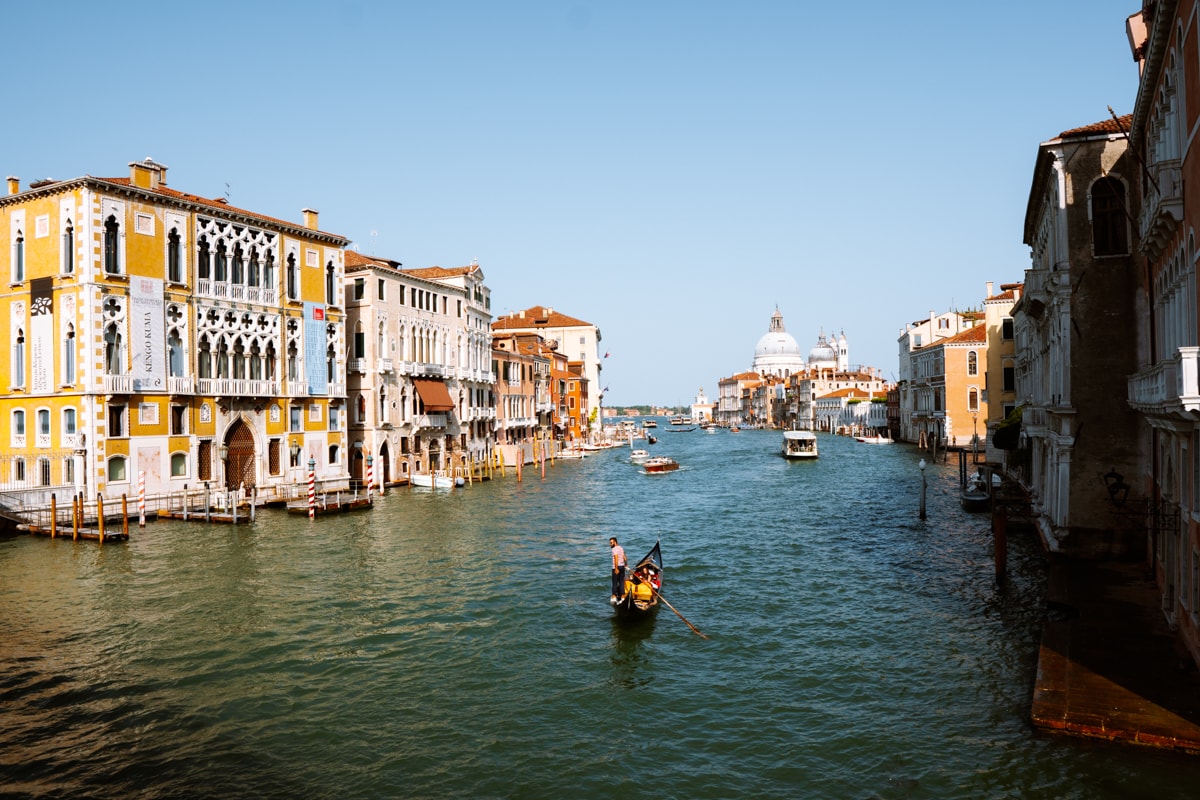
Take a ride along the Grand Canal and cross the Rialto Bridge. Admire one of the most famous squares in Italy, Piazza San Marco, which Napoleon himself called the reception room of Europe. Soak up the art in the magnificent basilicas or take a trip to the glass island of Murano or the small island of Burano with its iconic colourful houses.
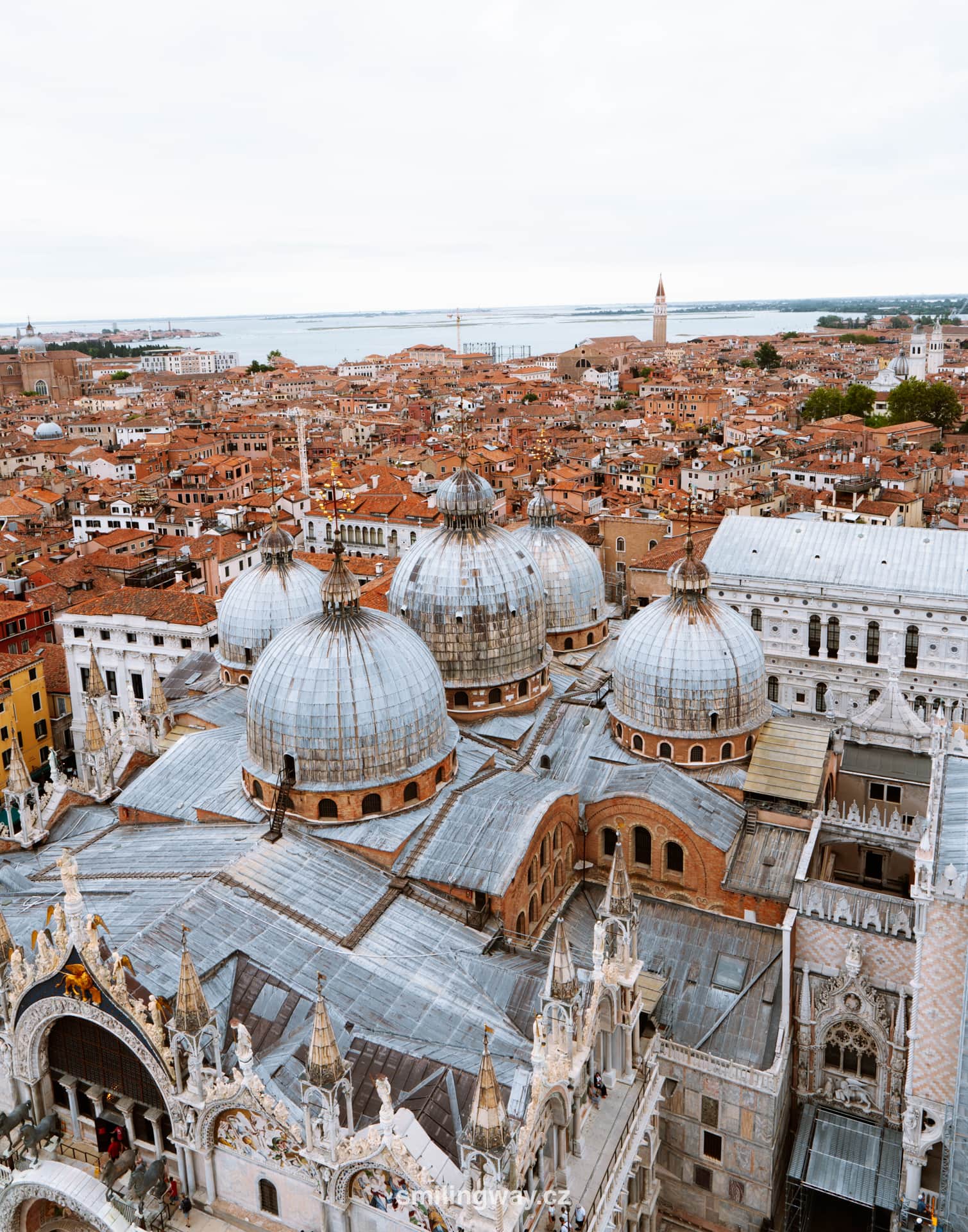
How to get to Venice: Take a direct flight from Prague to Marco Polo or Treviso Airport in just over an hour. From the airports, Venice can be easily reached by bus in 30-60 minutes.
☞ More information about Venice: Here are Things to do in Venice + useful tips. Or plan your itinerary for 2 days in Venice (including a map and links to other articles about Venice).
Things to do in Italy: Tuscany – Florence – Pisa
Tuscany, one of the most famous and beautiful regions in Italy. A region stretching from the dominant peaks of the Apuan Alps, through the gentle hills of the Chianti wine region to the coastal beaches, sea and islands.
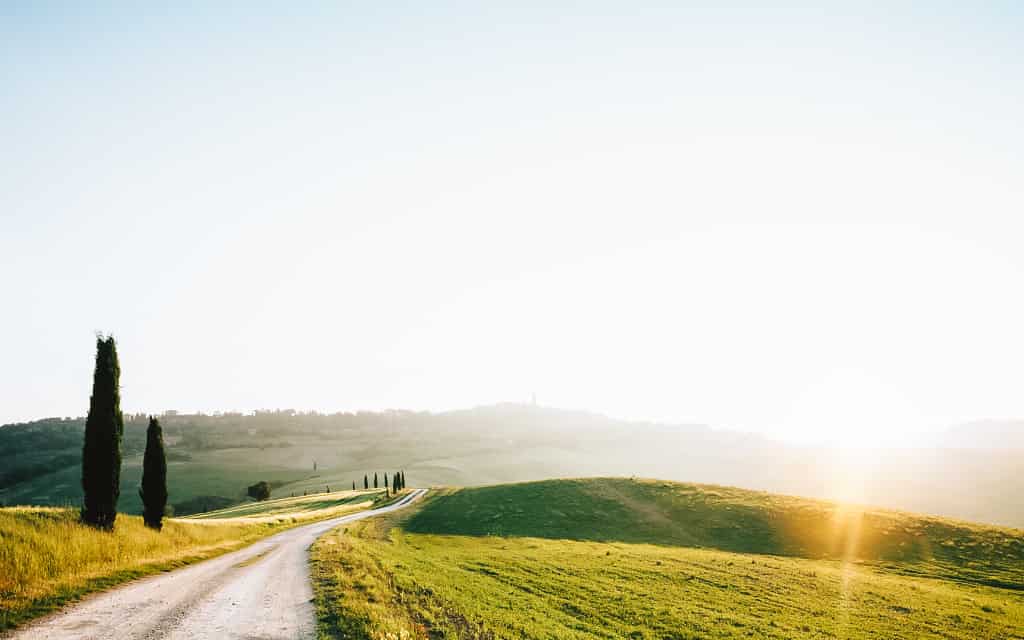
Tuscany is the perfect interplay between the city and the medieval villages. Olive groves, avenues of cypresses and endless vineyards that caress, as well as a rich artistic and architectural heritage. Your taste buds will be delighted with excellent wine and great food.
Getting to Tuscany: A car is the best way to explore Tuscany. You can also take direct flights to Pisa, Florence or Bologna, which are well connected by train, or you can rent a car at the airport and explore Tuscany on your own.
☞ More information about Tuscany: Here is our detailed guide and the most beautiful places in Tuscany (including a map and useful information). Or get inspired by the detailed itinerary for a 5-7 day roadtrip through Tuscany.
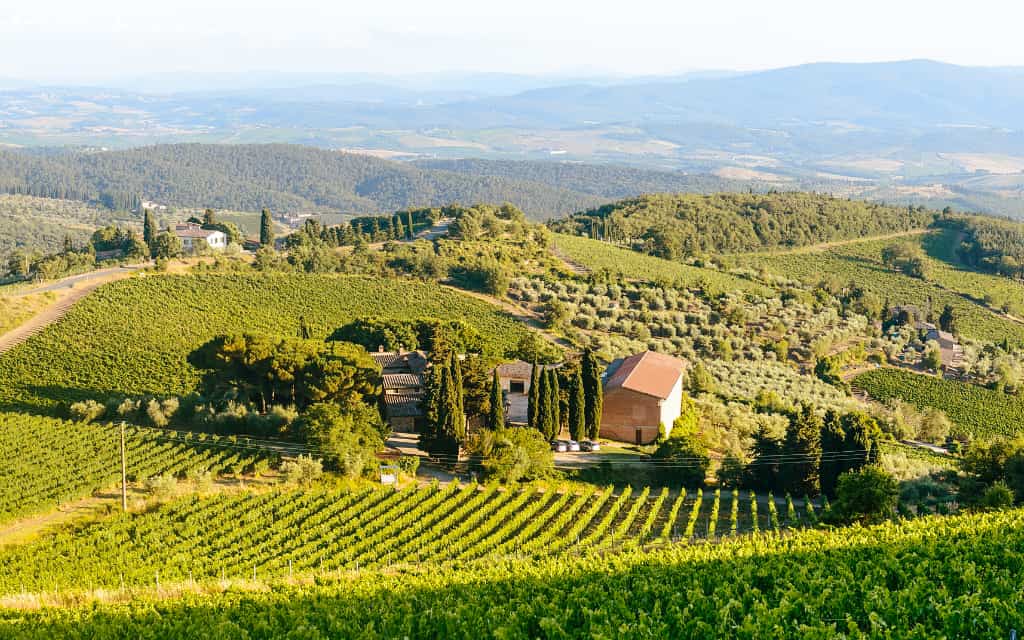
Hotels in Tuscany 😴
Florence
Florence is the “capital” of Tuscany. A Renaissance town with a famous cathedral where you can wander the old streets for hours. And be charmed.
Because Florence will enchant you. The sights, the atmosphere, the art. Florence is also known for its rich nightlife and great shopping opportunities.
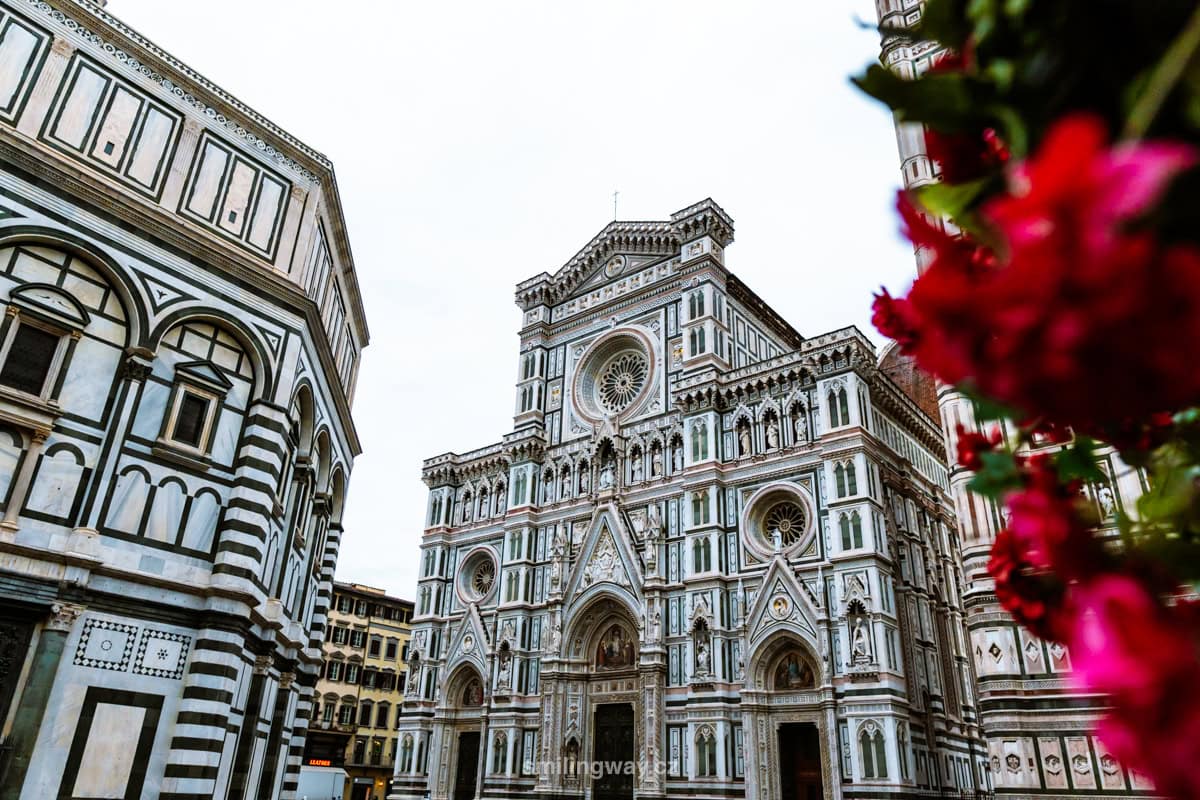
☞ More information about Florence: Here is the list of the most beautiful places in Florence. Or plan your itinerary for 2 days in Florence (including a map and useful information).
Pisa
Pisa, a historic city famous for its Square of Miracles, with the world-famous Leaning Tower, the imposing cathedral and the largest Baptistery in Italy.
You’ll only need one day to visit Pisa, but it will be a day full of walking through the winding streets, delicious gelato and views of the city from the Leaning Tower.
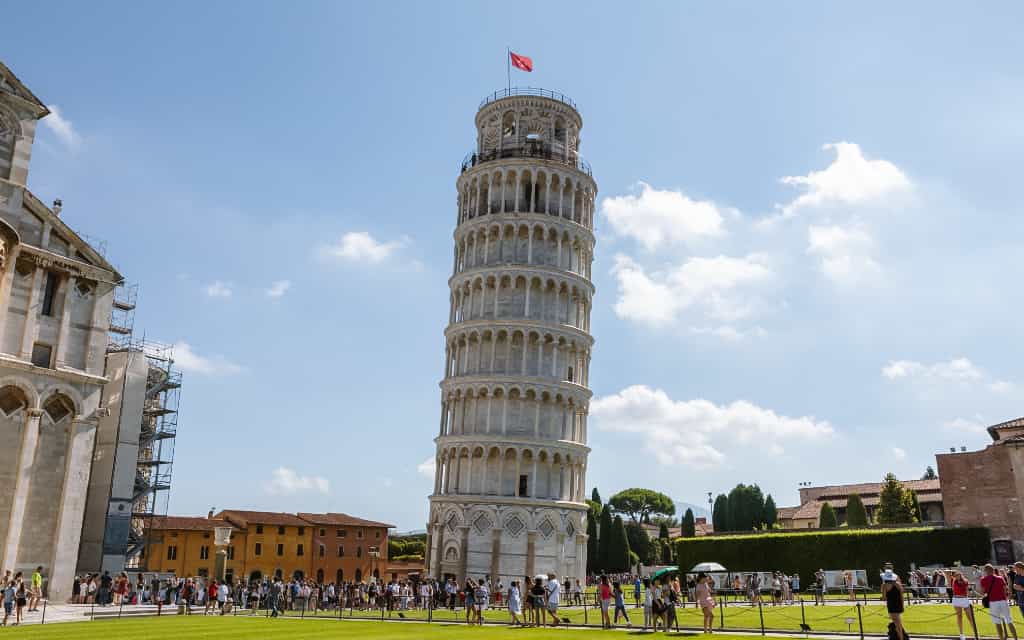
☞ More information about Pisa: Here is our detailed guide to Pisa, Italy (top places, transport, food and other useful tips including a map).
Things to do in Italy: the Cinque Terre
Cinque Terre features five fishing villages wedged into steeply terraced cliffs along stretches of rocky coastline – Monterosso with its beautiful beach, the rich nightlife of Verznazza, the slopes of the vineyards of Corniglia, the colourful boats and caves of Manarola and the medieval castle of Riomaggiore.
All the villages have houses in pastel colours and harbours full of fishing boats. It is an area full of dramatic views, vineyards and olive groves, criss-crossed by hundreds of kilometres of hiking trails. Cinque Terre is rightly one of the most beautiful places in Italy.
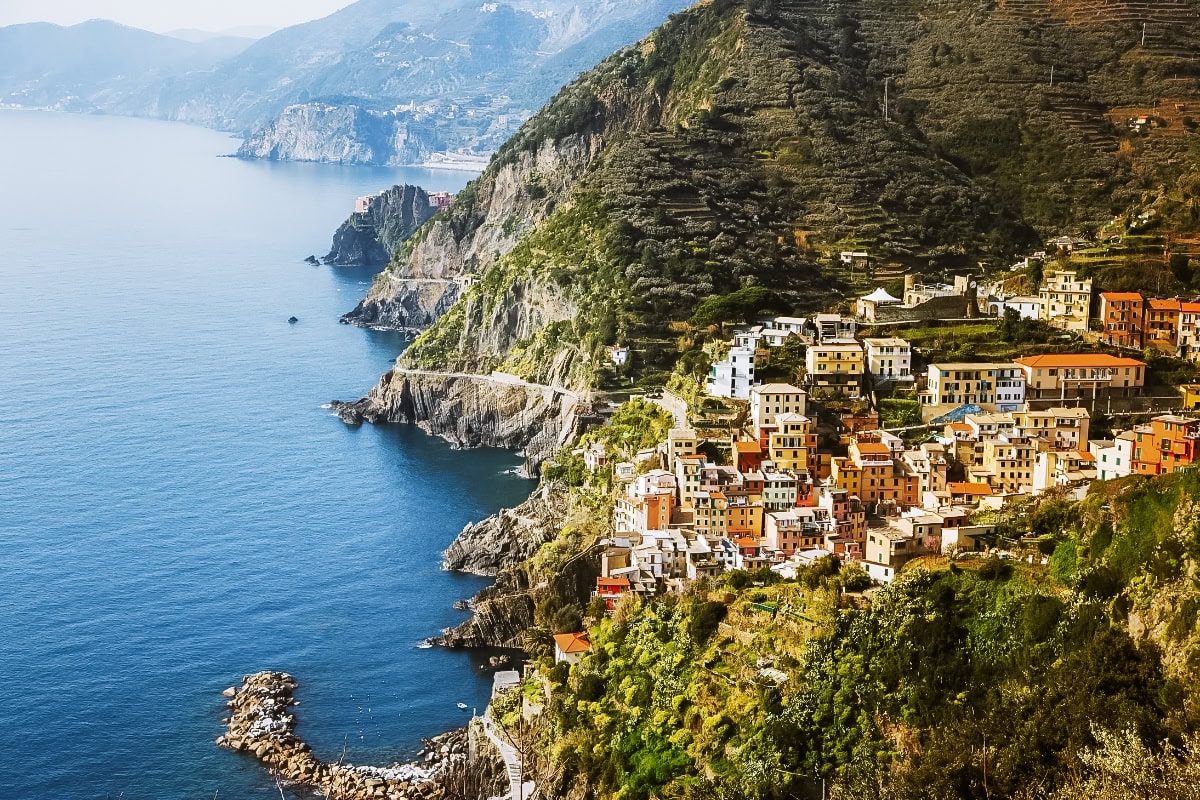
The villages are rich in agriculture and fishing, so you can enjoy local wine, olives, cheese, pasta, seafood and homemade bread.
Even those who are into hiking like us will enjoy it. The most famous hiking trail is the 12 km long Sentiero Azzurro (Blue Trail, Route 2), which connects all 5 villages. The trail is charged at a price of 5-7 €.
The Sentiero Alto (High Route, Route 1) is also well known, with a total length of 35 km. The route is not difficult and unlike the Blue Trail, you will meet fewer tourists.
How to get to Cinque Terre: A car is the best way to explore the entire Cinque Terre area. But you can also get by with public transport. A direct flight from Prague takes you to Pisa Airport, where trains run several times a day to La Spezia (journey time 1 hour). From La Spezia you can reach the villages of the Cinque Terre in half an hour by regional train or bus.
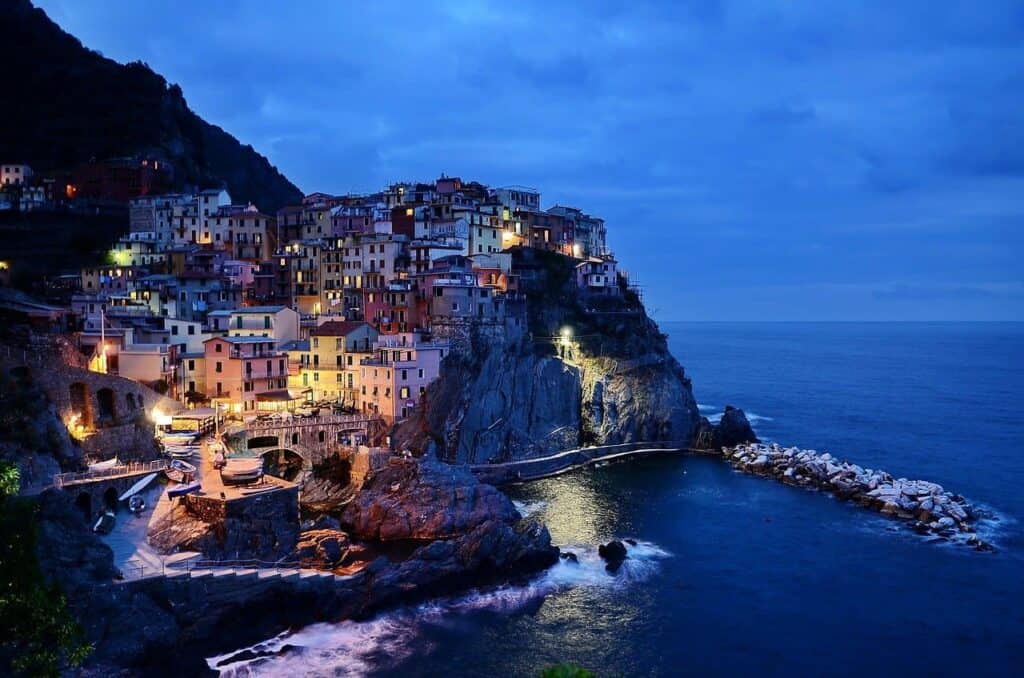
Things to do in Italy: the Emilia-Romagna region and Bologna
The region of Emilia-Romagna surrounds the city of Bologna. It is one of the richest regions in Europe and is also a base for car manufacturers such as Ferrari, Maserati, Ducati and Lamborghini.
There’s something for everyone – hiking in the Apennines, the Langhirano vineyards, swimming by the Adriatic Sea or the culture and delicious food of Bologna. In 2018, Lonely Planet named the Emilia-Romagna region the best place to visit in Europe.
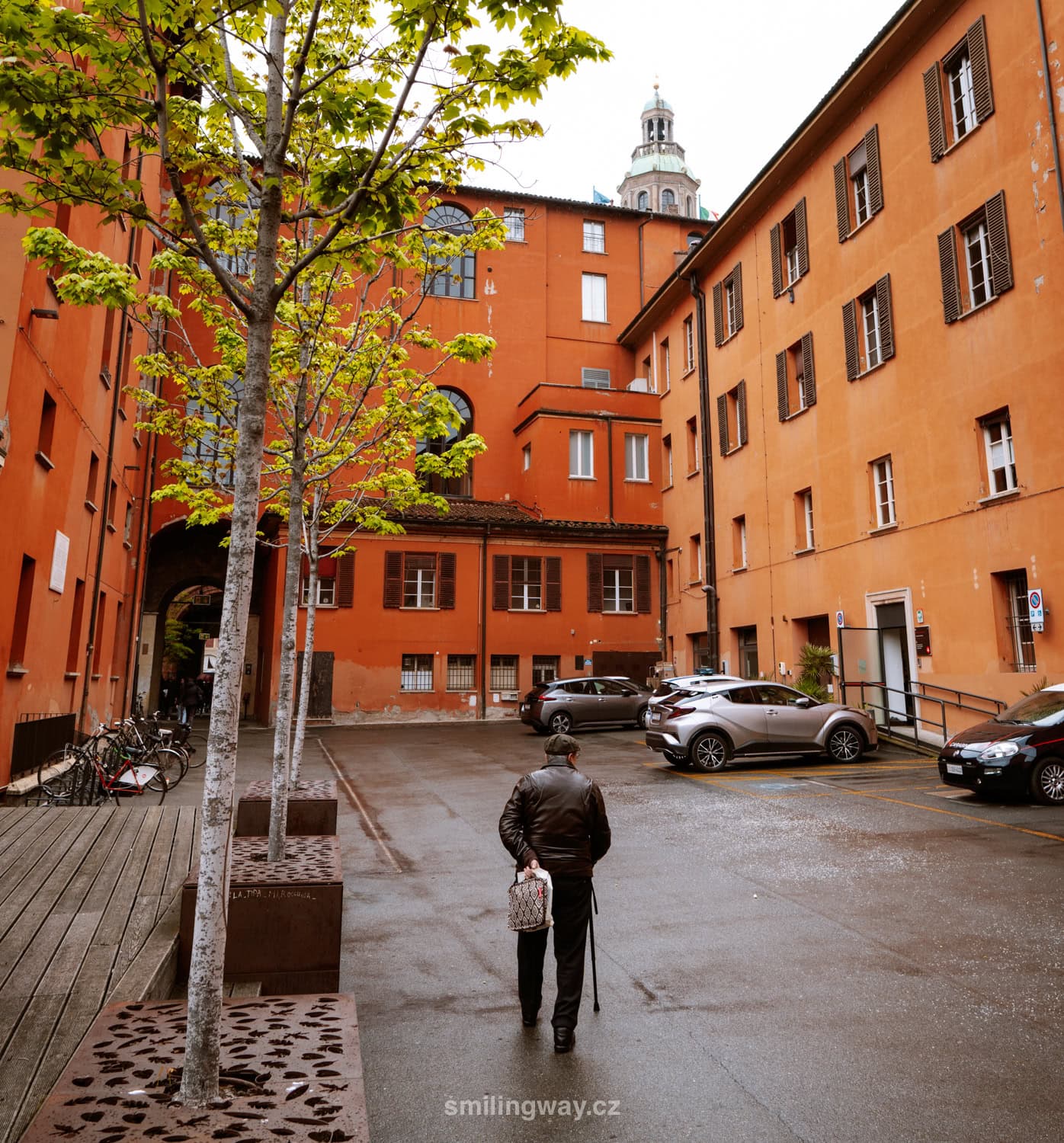
Bologna
The capital of the region is Bologna, famous for its towers and 38 km of arcades, where you can cool off on hot days.
Bologna has an incredibly lively and relaxed atmosphere. The centre is packed with locals out for a stroll, to listen to live music and enjoy a glass of wine. The orange facades of the houses are interspersed with imposing churches, and the hidden alleyways hide excellent tavernas serving famous Bolognese cuisine.
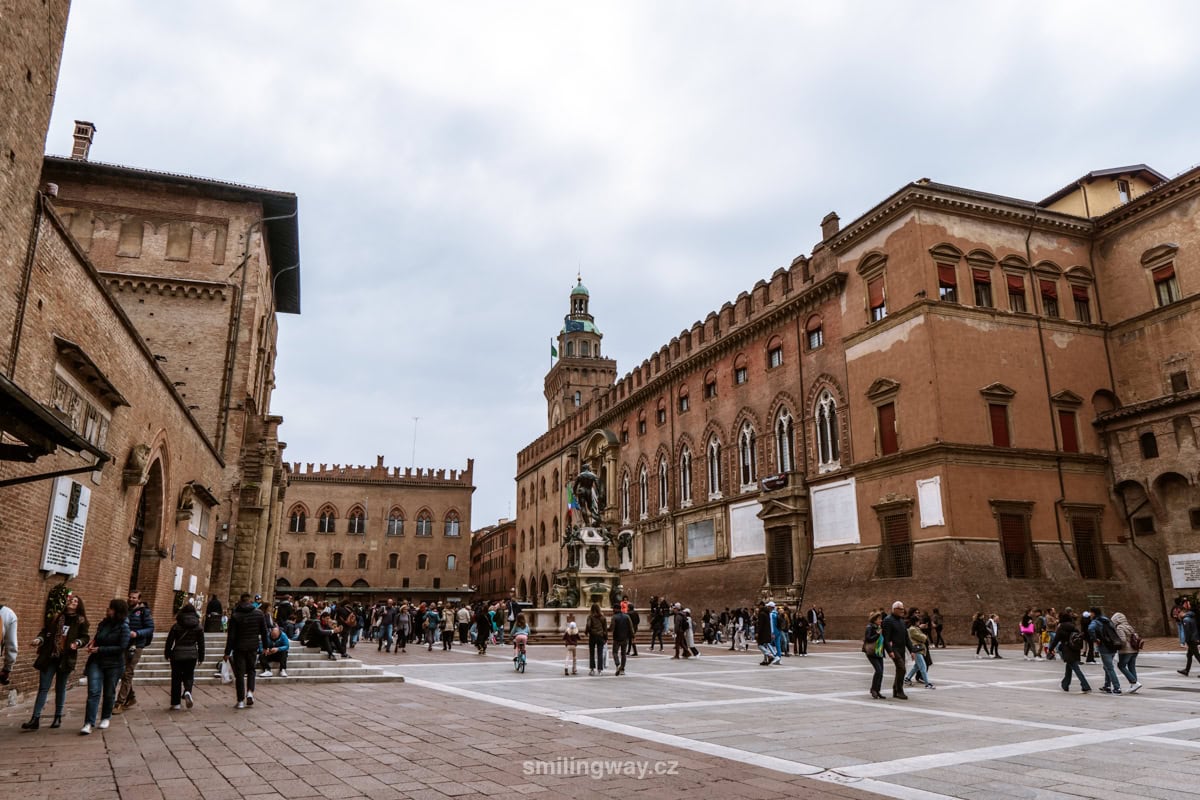
During your visit, don’t miss the University of Bologna, the oldest in the world, the Gothic Basilica of San Petronio and Piazza Maggiore, or the canal of La Piccola Venezia (Little Venice). In Bologna you must try the Bolognese spaghetti, Mortadella salami, lasagne, tortellini or tagliatelle.
How to get to Bologna: Bologna has its own airport with direct flights from Prague, mainly in the spring to autumn season.
☞ More information about Bologna: Here is a list of things not to miss in Bologna. Or plan your itinerary for 2 days in Bologna (including a map and useful information).
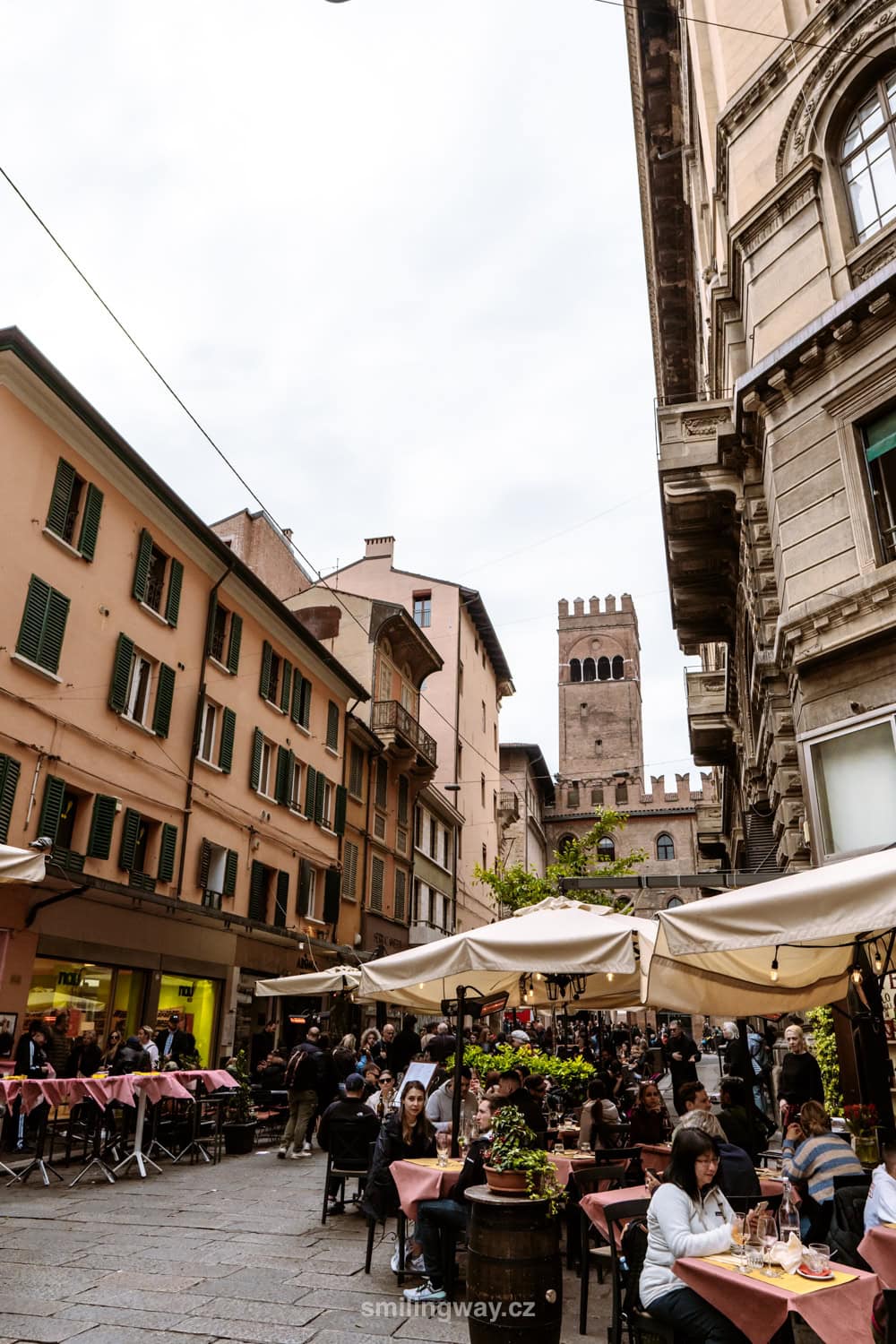
Things to do in Italy: San Marino
San Marino is a small landlocked state in Italy that is easily traversed in a few hours. You can take a day trip here from the nearby resort of Rimini.

It has a great location in the mountains near the Adriatic Sea. The capital of San Marino is a maze of hilly medieval streets with lots of cafes and small shops.
The entire capital of San Marino is a UNESCO World Heritage Site. It is dominated by Monte Titano, from which you will have a magnificent view of Italy.
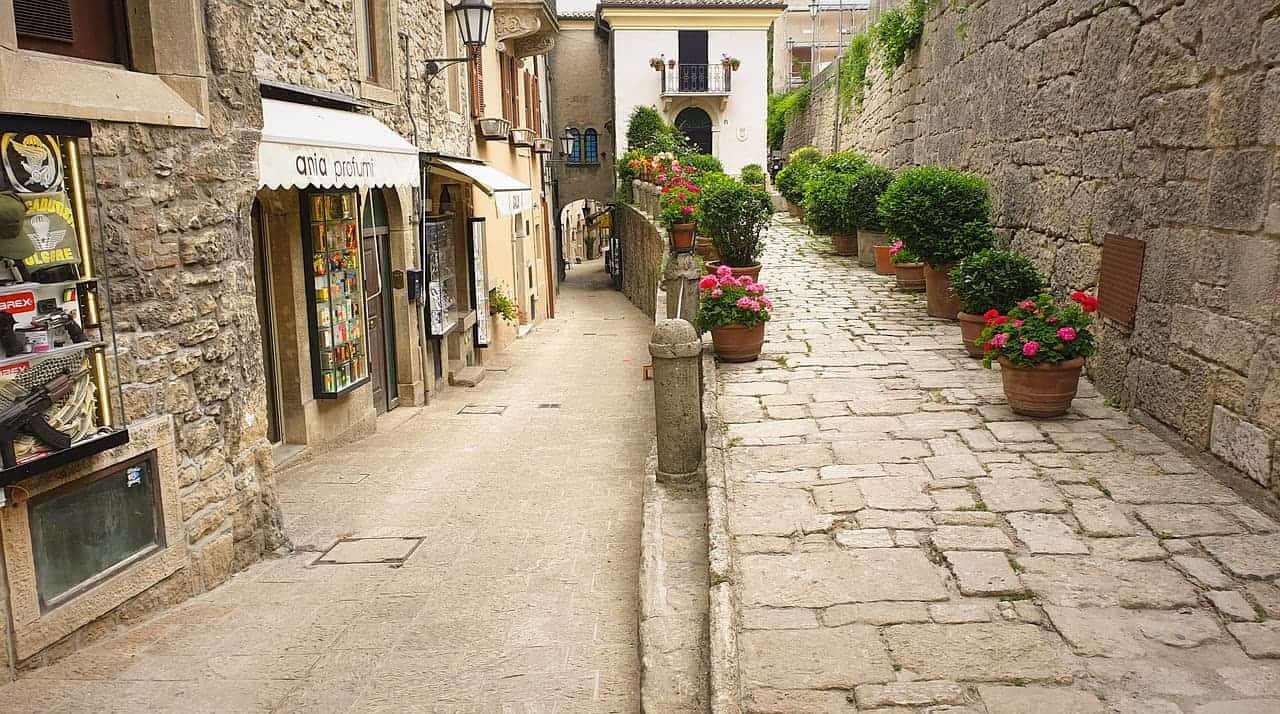
How to get to San Marino: The nearest airport is in Rimini. There are buses to San Mario from Rimini. You can buy a ticket to San Marino on the bus for a few euros. You can find the Rimini – San Marino timetable here.
Things to do in Italy: region Umbria
If I were to make a subjective ranking for the most beautiful places in Italy, Umbria would be at the top. Umbria is adjacent to Tuscany, so far fewer tourists come here than to Florence or Pisa. But that’s a shame, because Umbria is absolutely beautiful.
Visit the regional capital of Perugia and its medieval historical centre built on a rock, from Palazzo dei Priori, Piazza IV Novembre to San Lorenzo Cathedral.
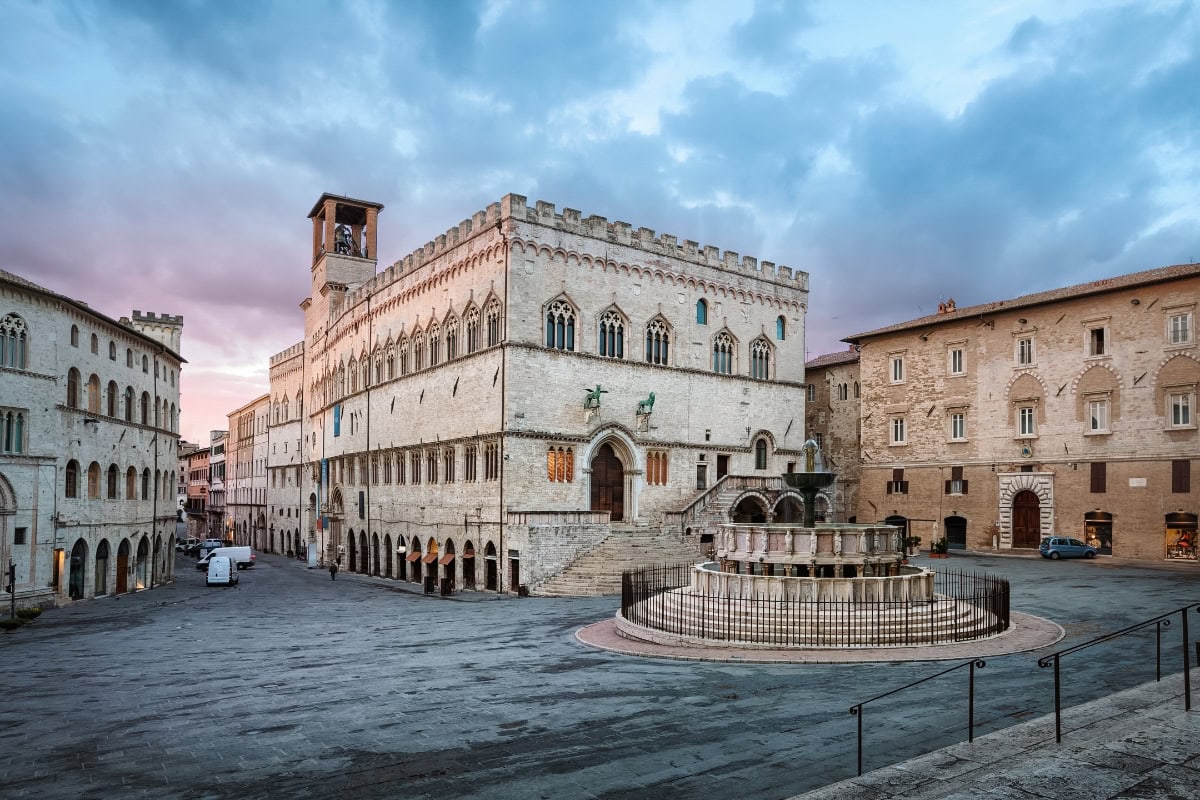
Most people to the region come to the historic city of Assisi. It is the birthplace of Saint Francis and has become an important pilgrimage site. The dominant feature of the city is the Basilica of St. Francis of Assisi, which is also a UNESCO World Heritage Site.
Other beautiful towns include Spello, Todi, Orvieto, Gubbio and Spoleto. In Umbria you will also find the Marmore Falls, which at 165 m high are the highest in Italy.
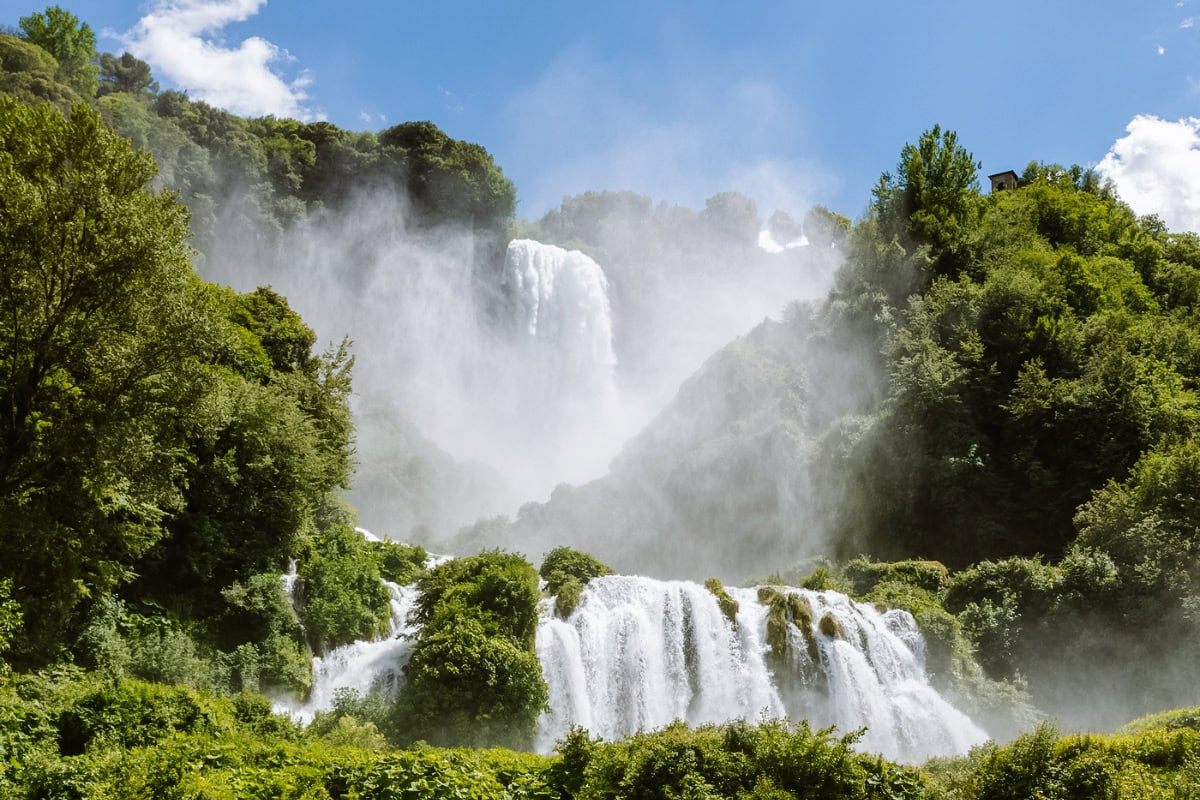
Mountain and nature lovers will also enjoy the Monti Sibillnini National Park with its highest mountain, Monte Vettore (2476 m). There are plenty of marked hiking trails. You can enjoy a wonderful spectacle from May to July, when the meadows are full of poppies.
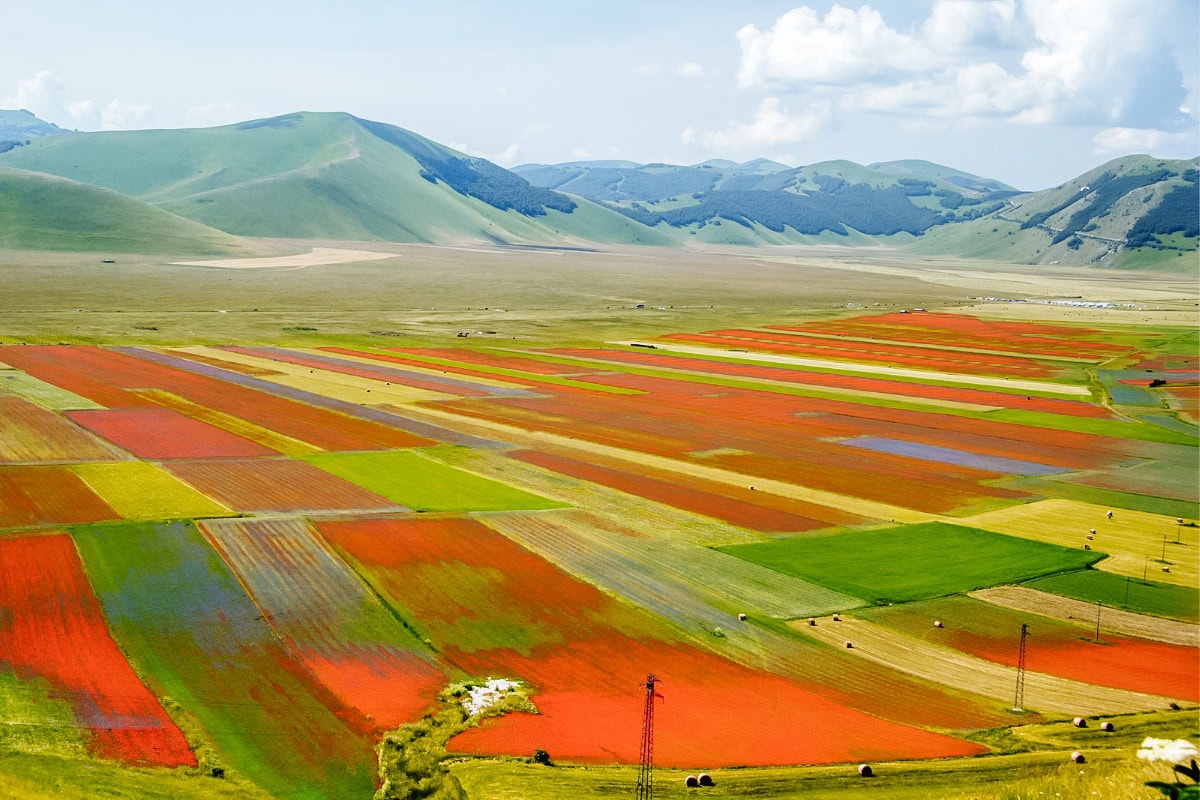
Getting to Umbria: A car is the best way to explore this beautiful region. The nearest major airport is in Rome, from where you can be in Umbria in 1-2 hours, depending on where you’re heading.
☞ How to protect yourself while travelling: Travel insurance not only covers medical expenses, but also situations such as trip cancellation, loss of luggage or liability insurance, so it takes care of your safety while travelling. Find out more about it, what all travel insurance covers.
Things to do in Italy: Rome – Vatican City
Visiting Rome is almost a must in Italy. A city where history oozes from every corner. Oh, no! It is one of the oldest inhabited cities in Europe. The Colosseum, the Roman Forum, the Pantheon, the Trevi Fountain, the Castle of the Angels and other places that are among the most beautiful in Italy and the world.
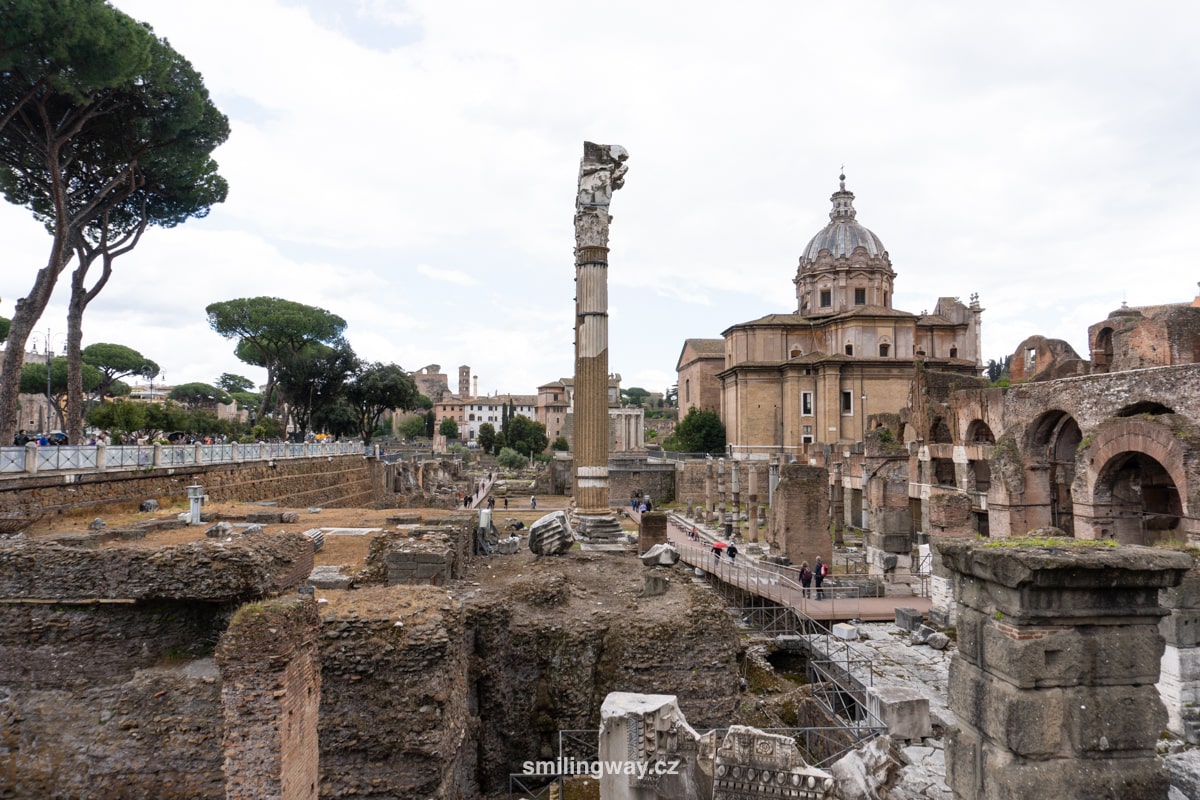
When visiting Rome, you can’t miss a visit to the Vatican – the imposing St Peter’s Basilica and the Vatican Museums with the magnificent interior of the Sistine Chapel.

How to get to Rome: There are several direct flights daily from Prague to Rome throughout the year.
☞ More information about Rome: Here’s a list of the best things to do in Rome. Make your 3-day Rome itinerary. In the articles you will find links to other Rome guides (including maps and useful information).
Hotels in Rome 😴
Things to do in Italy: Naples – Pompeii – Vesuvius
Naples
Naples is considered the gateway to the south of Italy. It is a city that will enchant you with its historical treasures and, above all, its food. Naples is the birthplace of pizza. You definitely have to try it here.
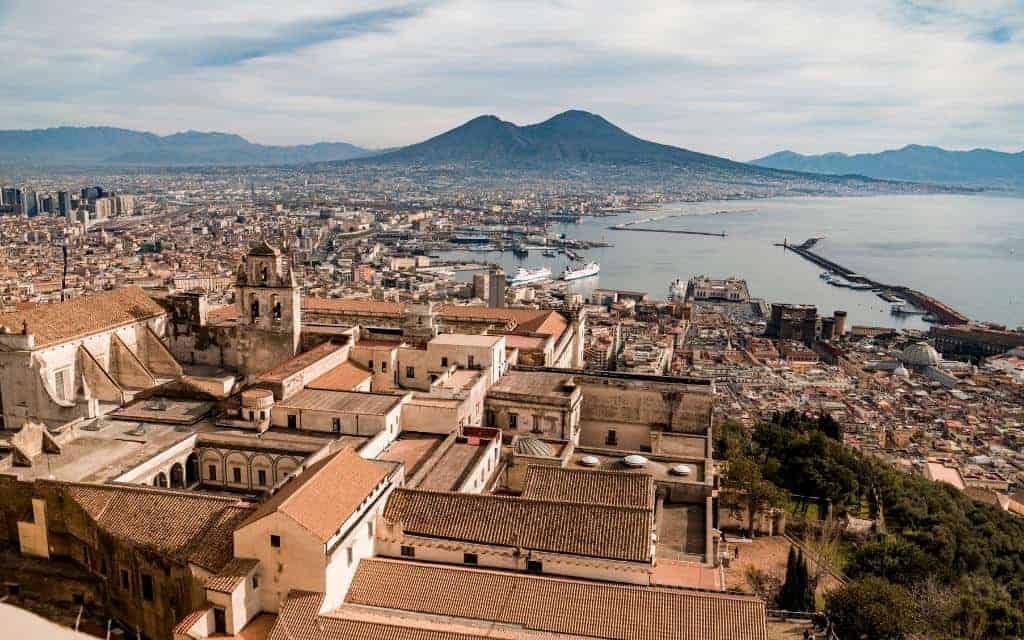
Naples is home to one of the largest museums of Roman and Greek artefacts, the Naples Cathedral, Castel Nuovo in front of Piazza Municipio or Castel dell’Ovo, and the historic underground, where you can learn how the city has been built and changed over the years.
Naples is a bit dirty, but on the other hand it is authentic. You’ll either love it or you won’t want to come back.
How to get to Naples: Naples has its own airport, where you can find regular flights from Prague, especially in high season from spring to autumn. The other option is to fly to Rome and take the train from Rome to Naples – you’ll be there in an hour.
☞ More information about Naples: Read the previous article on what to visit in Naples.

Pompeii
The ancient city of Pompeii can be found at the foot of the volcano Vesuvius, which was responsible for its destruction in 79 AD. Thanks to its preservation, Pompeii will give you one of the best lessons on the history of Italy.
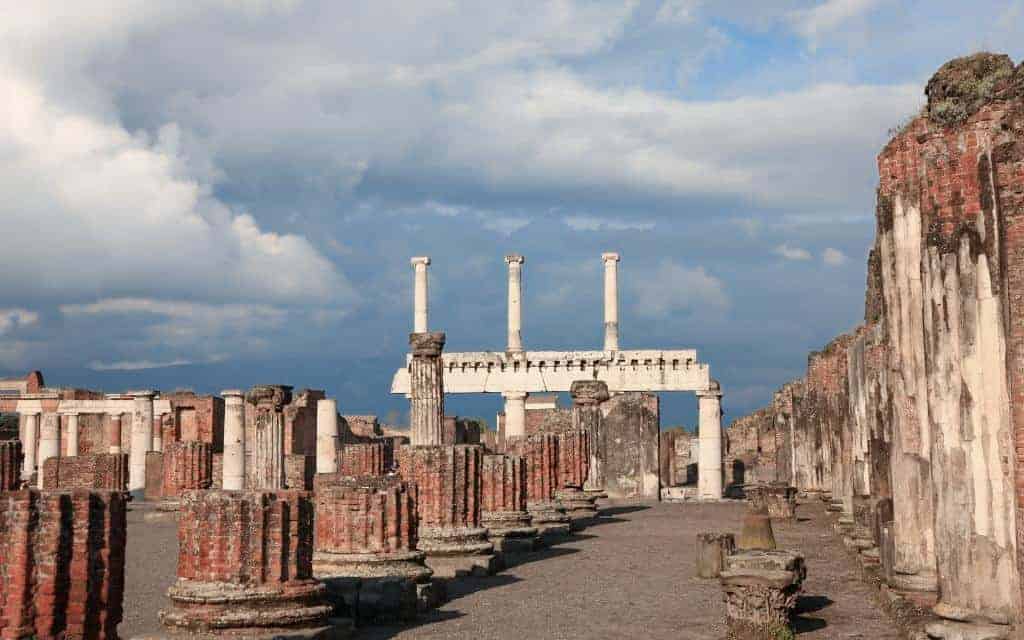
Pompeii is an ideal day trip from Naples. Set aside at least 2 hours to visit them. Or plan a hike up to Vesuvius – you’ll have a steeper climb, but it’s a short hike (you’ll be at the top in half an hour).
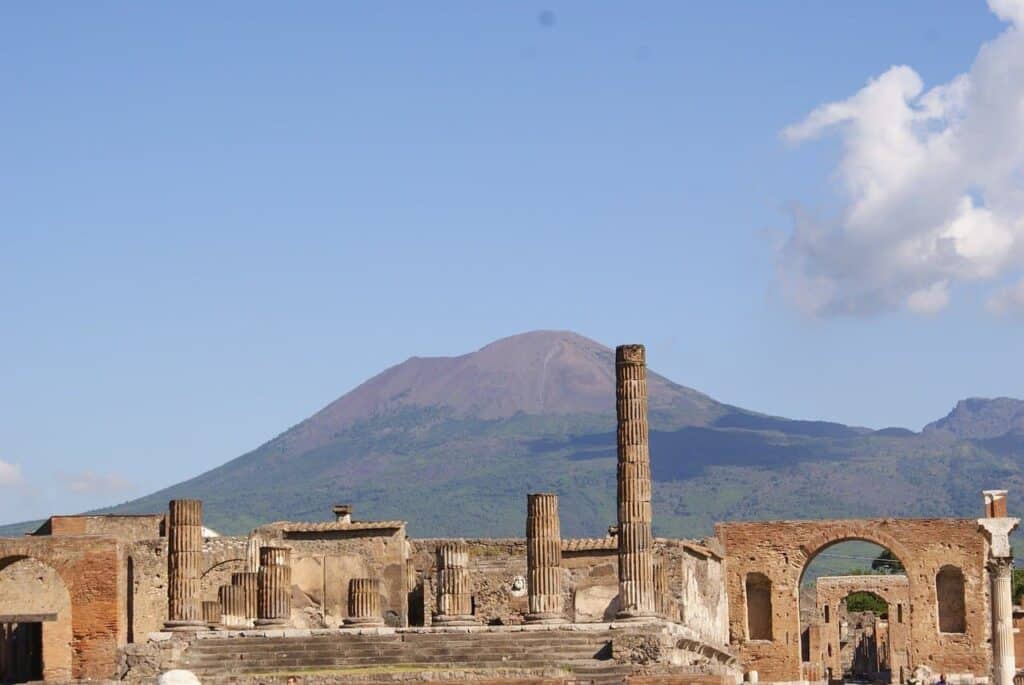
Between Naples and Pompeii lies another ancient city, which was also destroyed by the eruption of Vesuvius – Herculaneum.
How to get to Pompeii: There are regular trains from Naples to Pompeii. For more information about travelling by train in Italy, see our previous article.
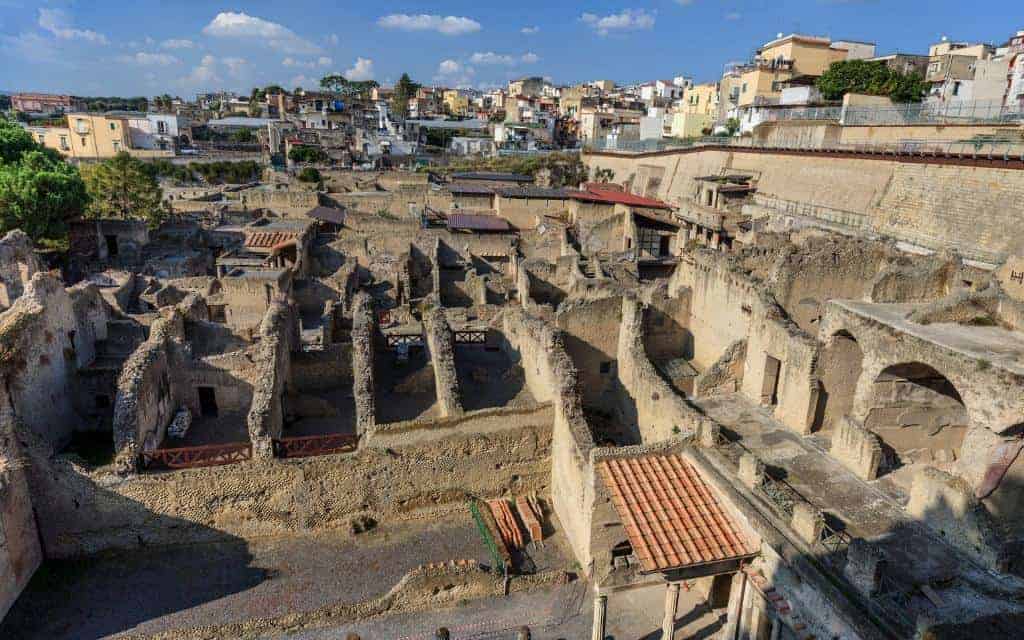
Things to do in Italy: Amalfi Coast
Many consider the Amalfi Coast to be one of the most beautiful natural scenes in the world. Imagine craggy cliffs, verdant forests and dramatic seascapes that create a contrast to the pastel houses nestled in the rocks. Visit the beautiful towns of Positano, Sorrento or Amalfi with its cathedral.
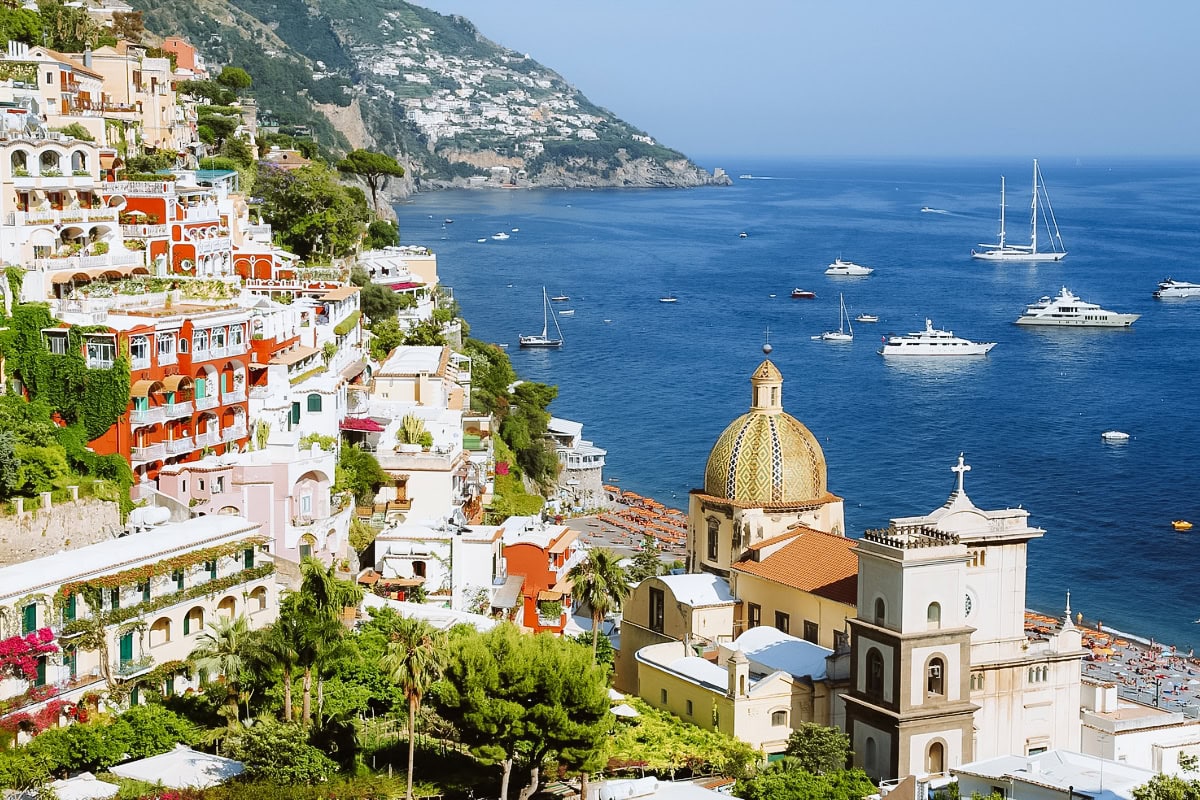
One of the main attractions is the 50 km long scenic road SS 163 Amalfitana, which lines the Amalfi Coast from Sorrento to Amalfi. But it’s so popular that it’s best to avoid it from June to mid-September or you’ll be stuck in a line of other cars and buses.
If you want to enjoy the breathtaking views of the Amalfi Coast, my tip is the Way of the Gods (Sentiero degli Dei in Italian). It is a 6.5 km long, moderately demanding route that leads from Nocelle to Bomerano. The views from here are fantastic (see below).
☞ We love travelling by train, that’s why we have put together 5 sample itineraries for where to go in Italy by train.
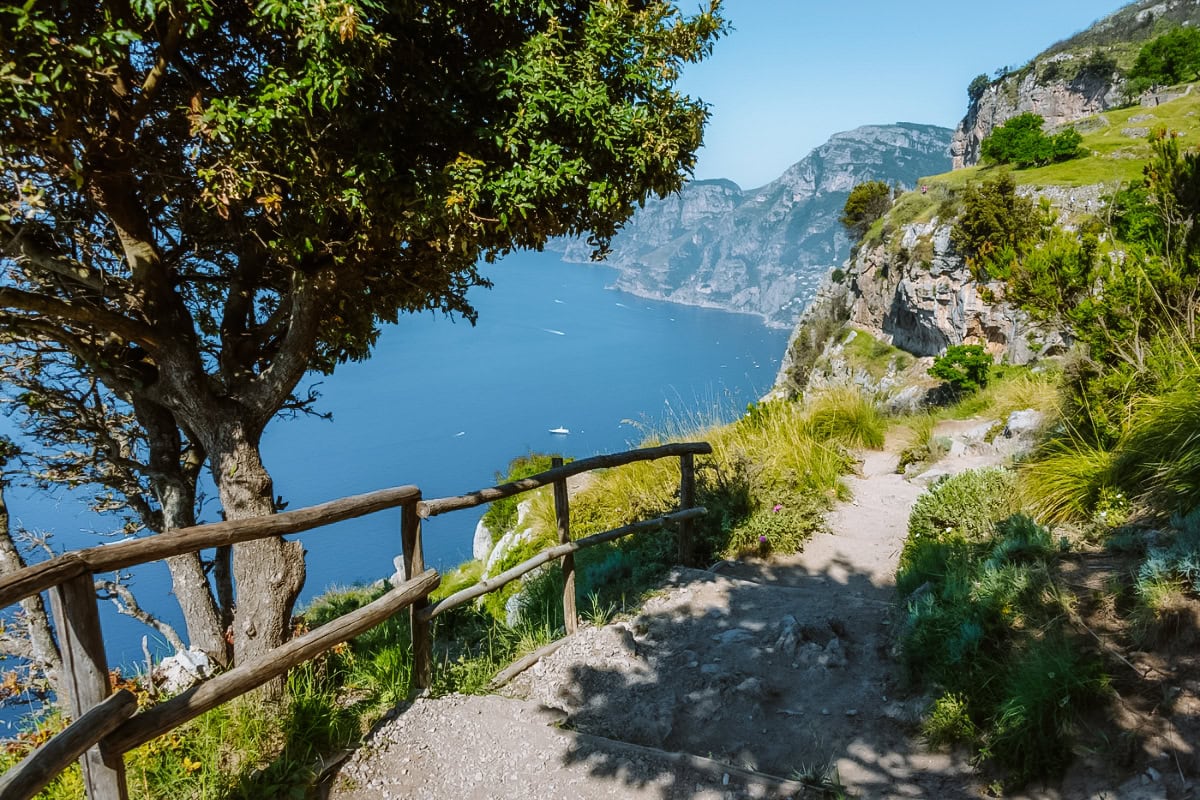
How to get to the Amalfi Coast: The best way to get to the Amalfi Coast is by car, so you can drive all the way from Sorrento to the Amalfi Coast itself. A good base is also Naples, from which buses run to the coast or you can take a boat (1 h trip). You can then travel along the Amalfi Coast by local buses. The journey from Sorrento to Positano takes just over half an hour.
Things to do in Italy: Capri Island
Capri is a small, mountainous island reached by boat from Sorrento on the Amalfi Coast. You can take a day trip to the island or spend your entire holiday here – it’s a beautiful island with many places to explore.
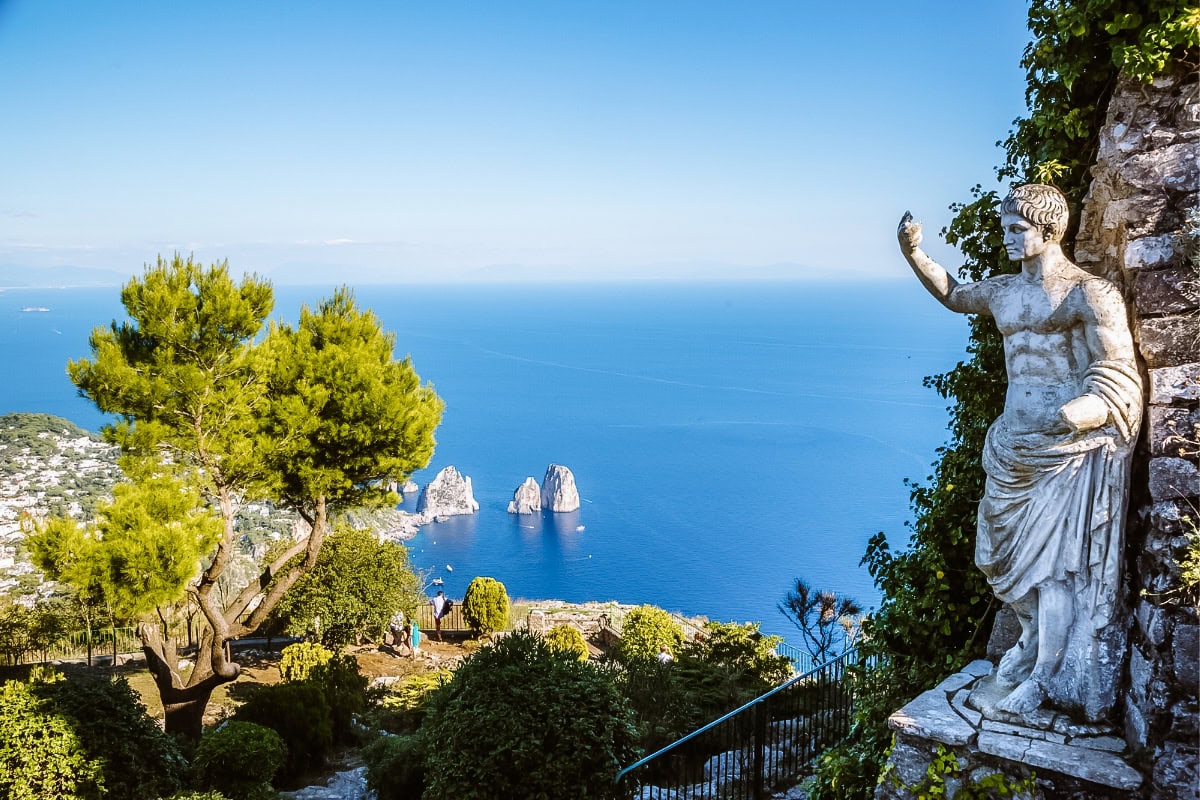
Don’t miss the Phoenician Steps with their spectacular views, the Sentiero dei Fortini Borbonici trail, the Arco Naturale rock formation, the Grotta Verde or Blue Grotta caves with their turquoise water, or the Belvedere Tragara viewpoint.
For the best view of the whole island, take the cable car to the highest peak of the island – Monte Solaro.
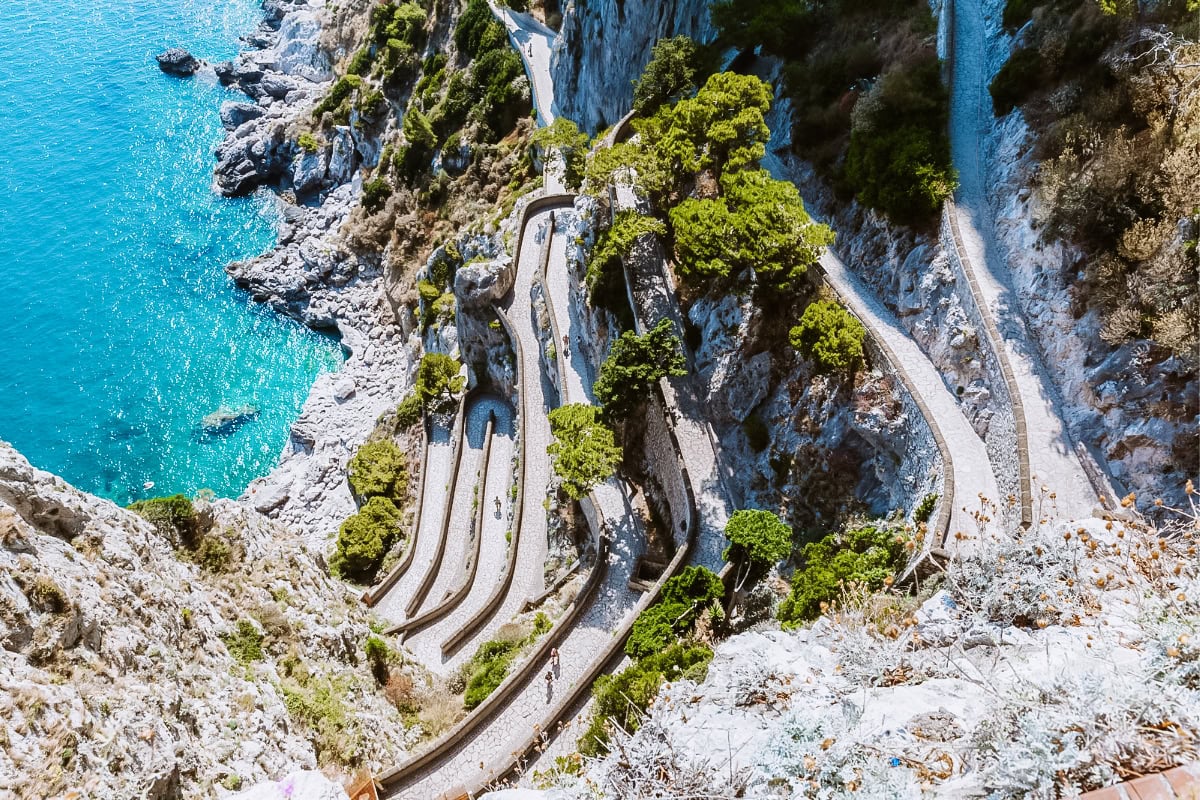
How to get to the island of Capri: The easiest way to get to Capri is by air via Naples and then by boat to the island. Ferries to the island leave directly from Naples at regular intervals. You will reach the finish line in less than an hour. The price is around 20 €.
Things to do in Italy: Sicily
Sicily is the largest island in the Mediterranean. It is home to Etna volcano and other smaller and still active volcanoes. Here you will find ancient Greek and Roman ruins, hundreds of castles, picturesque towns and beautiful beaches.
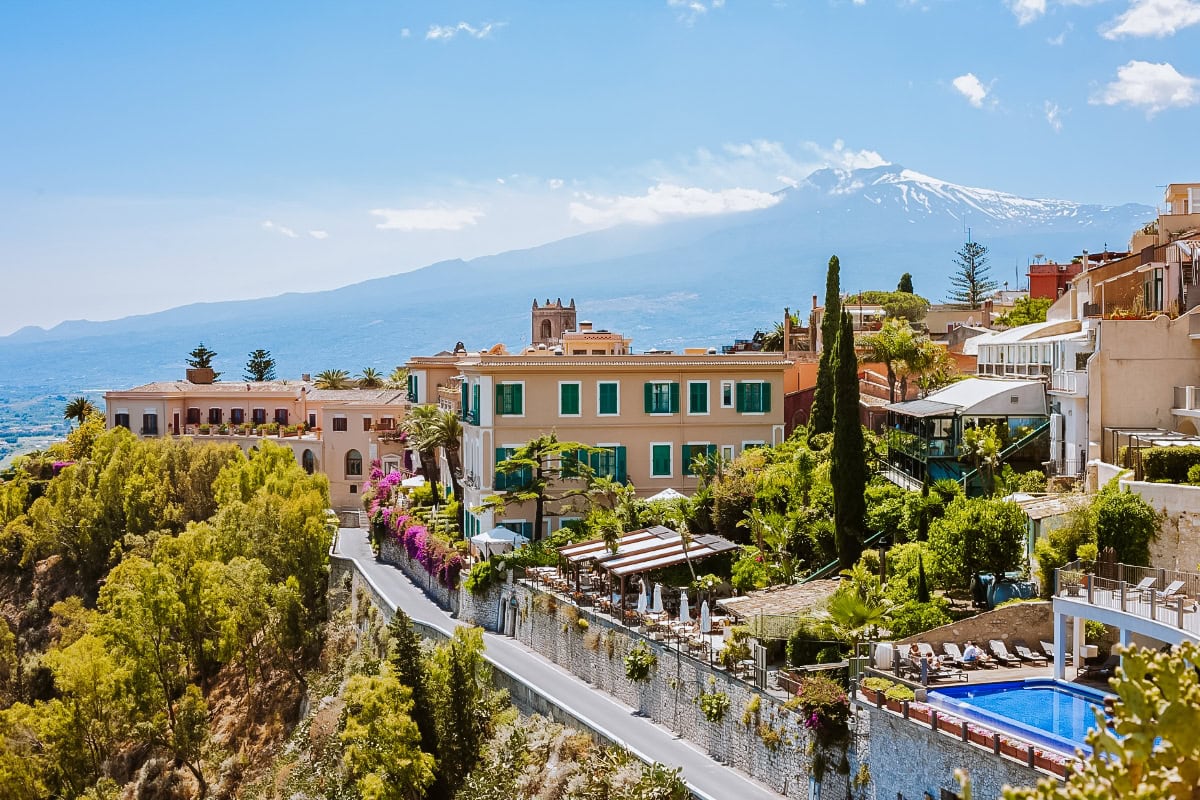
What to visit in Sicily? The cities of Siracusa, Cefalù, Catania or Palermo, the Tempio di Concordio in the Valley of the Temples, the volcano of Mt Etna, the ancient theatre of Taormina or the Aeolian Islands.
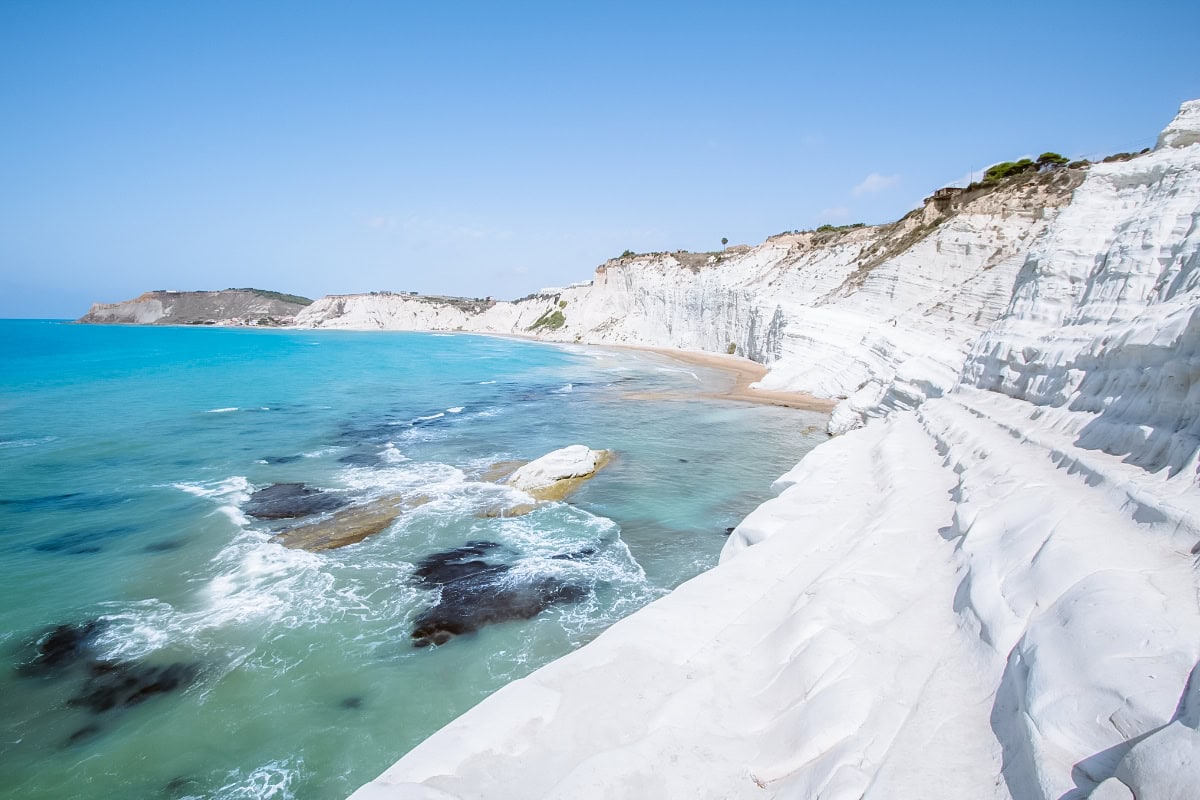
How to get to Sicily: The easiest way to get to Sicily is by air to Palermo or Catania. In Sicily, you can rent a car and drive around the island.
Things to do in Italy: Sardinia
Sardinia is the second largest Italian island and a place that manages to preserve its traditional character. The island is very popular with Italians, who take Sardinia by storm during their August siestas.
Sardinia is the perfect combination of long sandy beaches, historic sites and colourful coastal towns. Its mountainous surface makes it a paradise for hiking. Here you can discover the largest sand dunes and one of the deepest gorges in Europe.
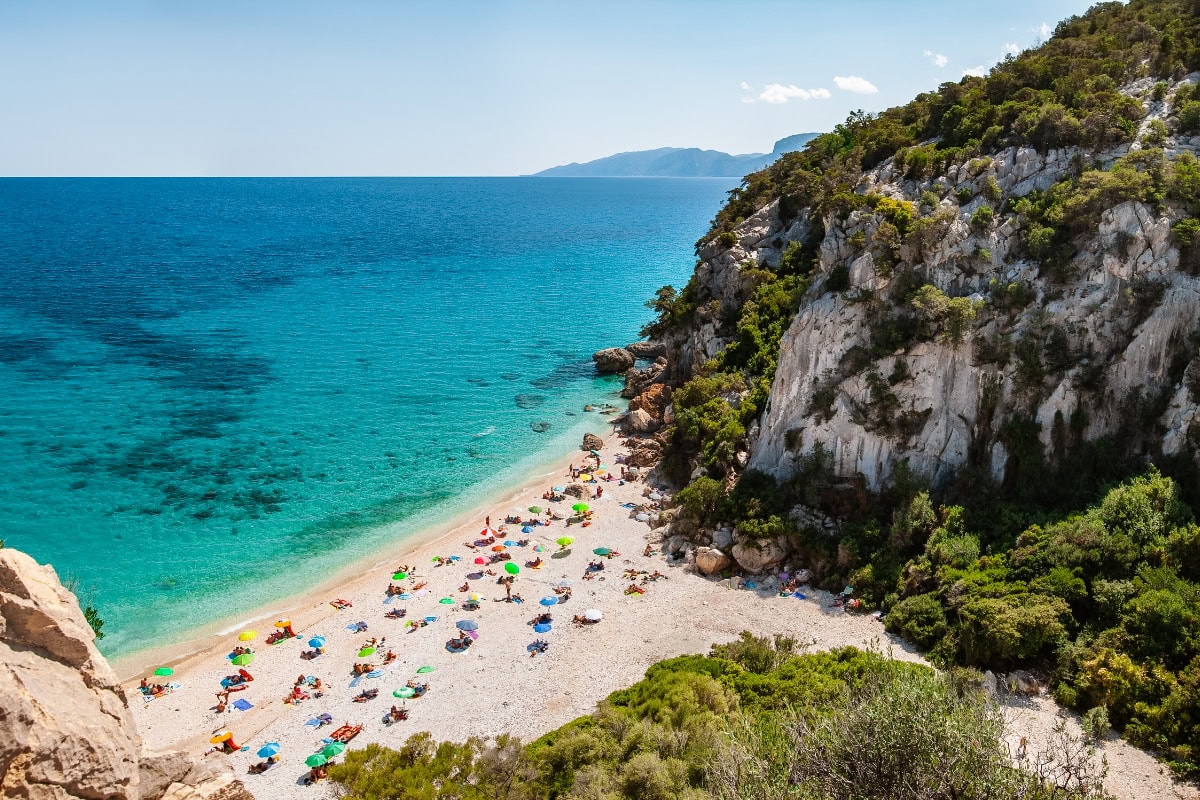
How to get to Sardinia: Sardinia is most easily accessible by air – there are often no direct flights from Prague, but one-stop flights are good value for money and time.
Practical information before travelling to Italy
By car to Italy
If you are travelling by car to Italy, you will incur the following charges along the way:
- German motorways are still toll-free. You pay for Austrian motorways. A motorway vignette for Austria costs €11.50 for 10 days (motorbikes €4.60). I recommend you don’t take the motorways in Austria. You’ll spend a lot more time on the road, and compared to the price you’ll pay for the stamp, it’s not worth it in the end with regard to petrol/diesel.
- Payment for the Brenner Pass – €11 (depending on where you are going; usually you don’t pay if you are coming from Vienna)
- The toll in Italy will cost you about 8 – 9 € per 100 km. You can pay the toll in cash or by card. Each payment gateway has a symbol at the top showing how you can pay.
- Petrol and diesel prices vary from country to country. The current fuel prices can be found at this link.
You can easily pay your Austrian vignette and the Brenner Pass toll in one place online. This link will give you up-to-date information on traffic in Italy (tolls, closures, etc.), but Google maps will also give you enough information.
The maximum speed limit on Austrian motorways is 130 km/h, 100 km/h on roads and 50 km/h in a municipality like ours. The maximum speed on Italian motorways is 130 km/h and in wet weather 110 km/h, on roads 90 km/h and in the village 50 km/h.
For example, if you are going to Lago di Como (northwest Italy), the route will also go through Switzerland. Here you have to buy a Swiss vignette for 40 CHF (you save money on the Brenner Pass). However, the route through Switzerland is rather an exception.
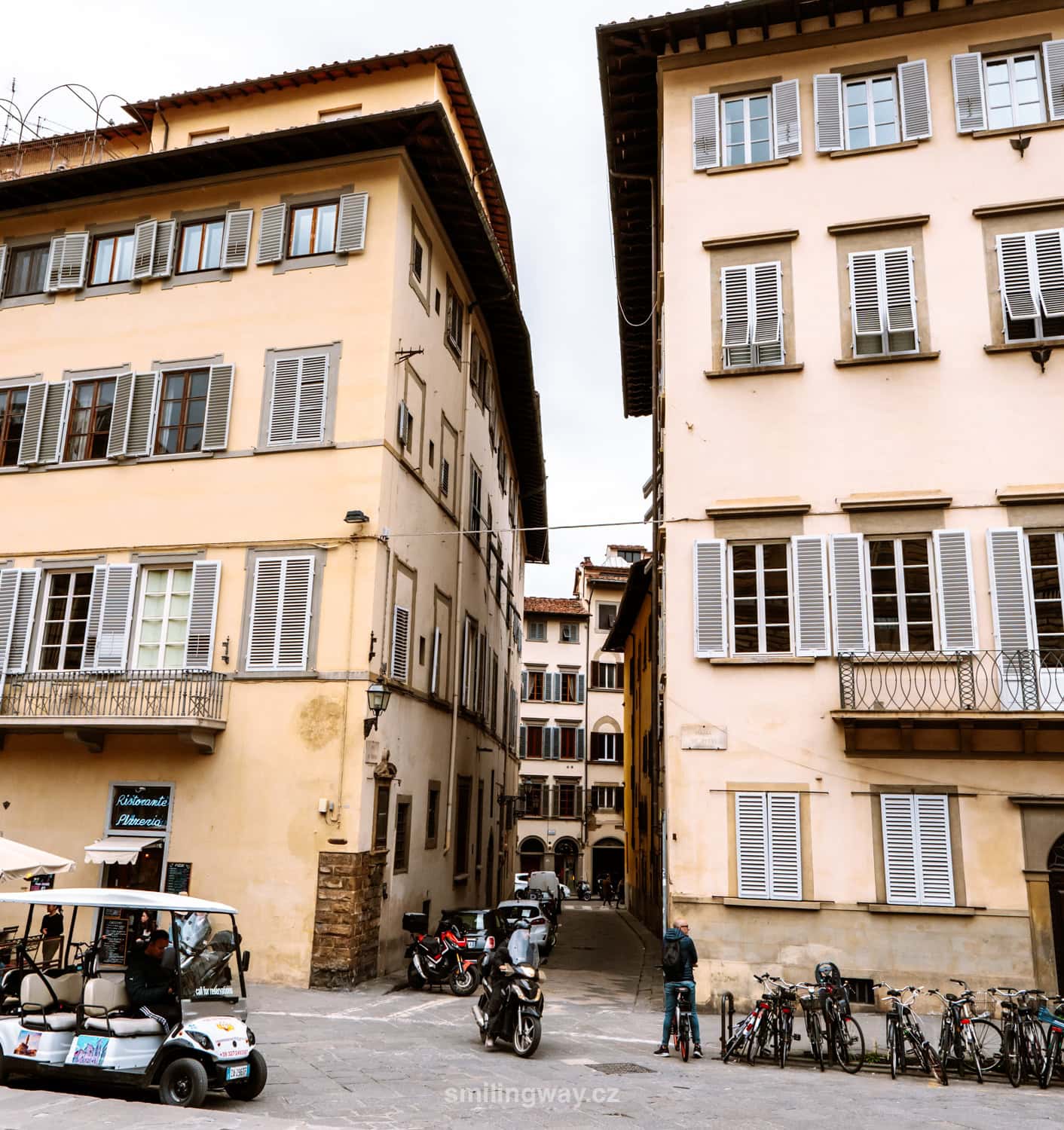
Restricted zones (ZTL zone)
Historic town centres are often restricted zones. You can tell simply by the signs that inform you about the ZTL zone. In this case, there is ample parking on the outskirts of the centre or town with connections to public transport.
☞ How to protect yourself when travelling by car: Auto insurance provides you with car insurance to get your car repaired, towed to a garage, transported back home or a replacement vehicle if needed. They will arrange and communicate everything for you.
Flights to Italy
Italy is served by low-cost airlines (Ryanair, Volotea, Wizzair, easyJet), but also by classic airlines such as Smartwings.
If you haven’t flown with a low-cost airline before, be prepared for the fact that only a small backpack is included in the basic ticket price. You will have to pay extra for hand luggage or checked baggage.
Each airline has different weight and size limits – the most up-to-date information is always on the airline’s website. Traditional airlines used to have checked baggage included in the price.
Tip: I recommend buying tickets for low-cost flights directly from the official website. On the other hand, tickets from traditional airlines (Lufthansa, Smartwings, etc.) can be cheaper through airline search engines (Skyscanner, Kiwi, etc.).
The advantage of search engines is that they allow you to combine low-cost and classic airlines. You set the parameters and within seconds you get a huge number of combinations. Of course, it’s a bit more expensive than if you were to fold the flights yourself, but on the other hand it saves you a lot of time.
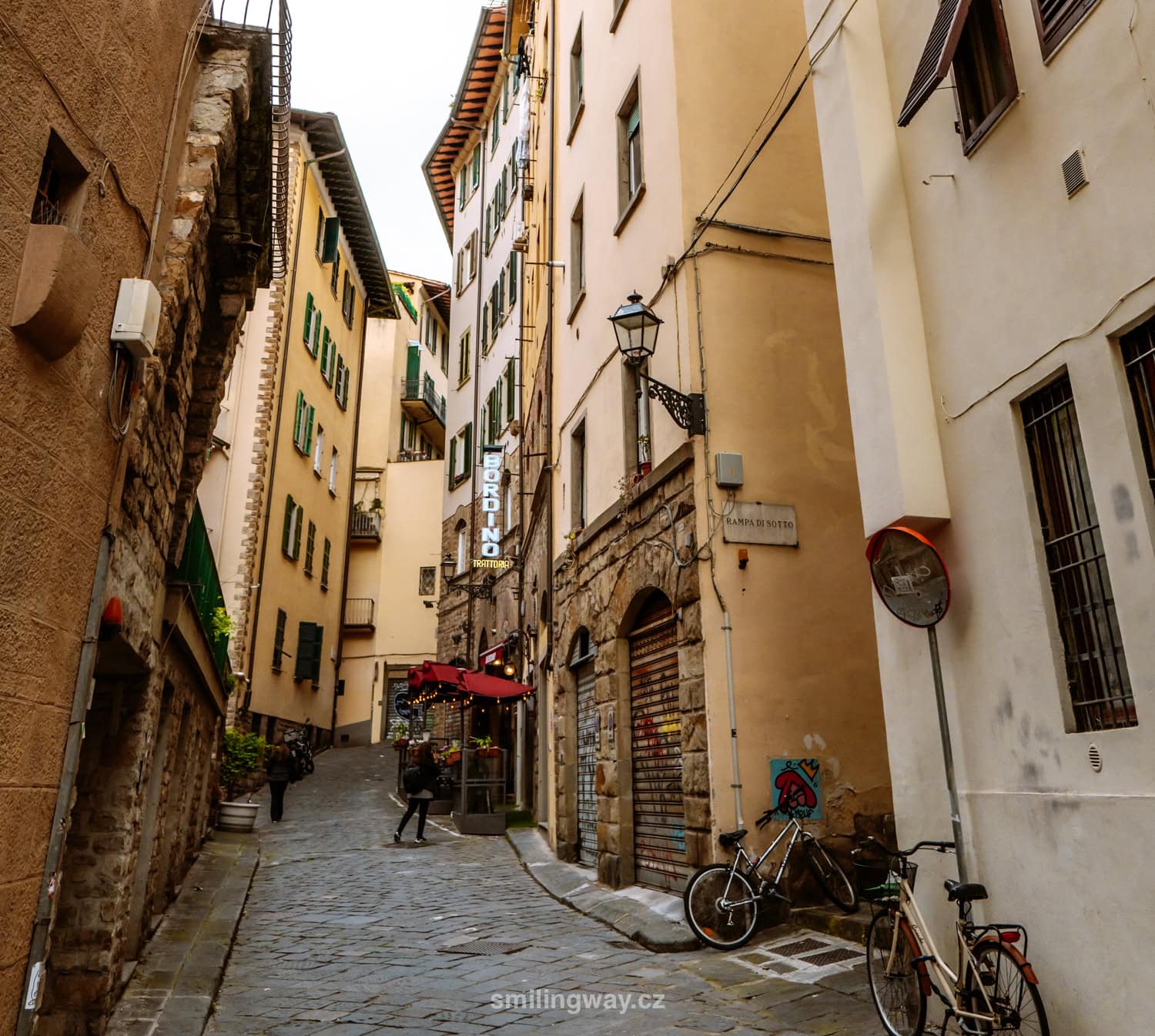
By train in Italy
Italy has great, cheap and dense train connections. We have written a separate guide for for train travel in Italy. Here are 5 sample itineraries, where to go in Italy by train (including maps and useful information).
The best booking resources for visiting Italy
Via Booking.com we search for all accommodation. It is the largest accommodation portal in the world and you will find everything from modern hotels, cosy guesthouses to seaside villas.
Get Your Guide is a huge booking system for buying tickets, guided tours and all sorts of activities. In one place you can read other travellers’ experiences and book tickets to the Vatican Museums, a cruise on the Danube or a desert safari in Dubai.
If you are planning to rent a car in Italy, the best experience we have with Rentalcars.com which has the widest range at good prices. Insurance and free cancellation is a matter of course.
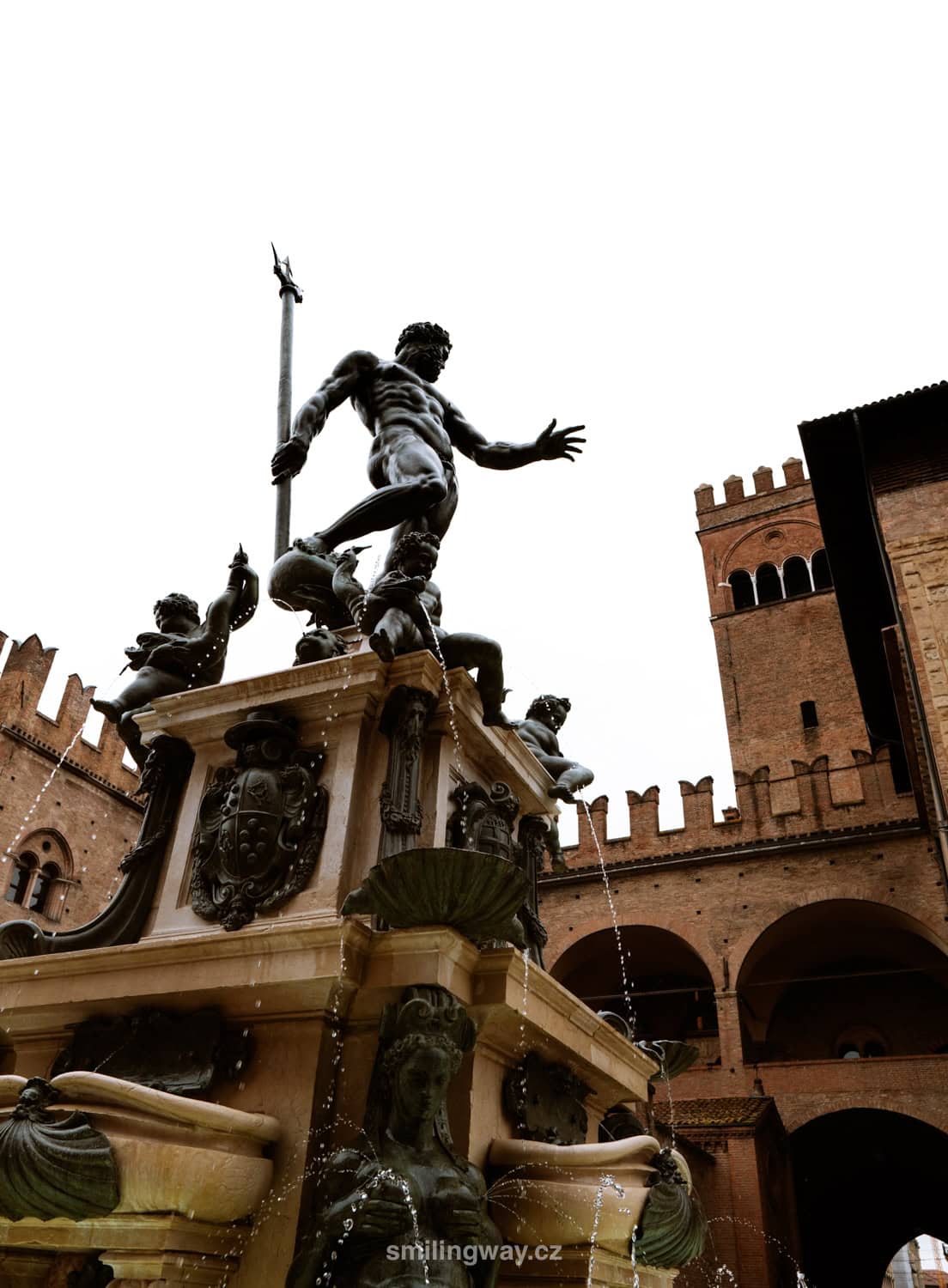
Reducer for sockets
In Italy, the electrical sockets used are types C, F and L. Types C and F are compatible with most sockets in Europe. Hotels and other tourist places have them too. Type L sockets are mainly found in older houses.
It’s better to pack a reducer, but you can buy it in almost any store for a few tens of crowns if needed. Generally we never needed it in the north of Italy, but towards the south we sometimes did.
If you have a question about this guide to what to see and visit in Italy, let us know in the comments below. Have a safe journey!
More information about Italy
USEFUL TIPS: In this article you will find more information on how to travel by train in Italy. Here are 5 sample itineraries of where to go by train in Italy (including a map and useful information).
ITALIAN CITIES: Rome is one of the most popular cities in Europe. Here’s a list of the best things to see in Rome. Build your 3-day Rome itinerary and see how to save in Rome. Find out all about the Vatican Museums or the Colosseum.
In the article What to see in Venice, we give you tips on the most beautiful places and other useful tips. Find out what to see in Naples in a separate guide.
TUSCANY: Tuscany is one of the most popular parts of Italy. You can’t miss Florence on your visit to Tuscany. Build your itinerary from a list of things to see in Florence. When visiting Tuscany, take a day trip to Pisa too .
LOMBARDIA: Milan is the capital of Lombardy, famous for its magnificent cathedral. Just outside Milan is Lago di Como, a beautiful alpine lake. Or check out our 15 tips on what to see in Bergamo.
DOLOMITES: One of the most beautiful mountain ranges in the world can be found in northern Italy. What to see in the Dolomites is in a separate article. In the Dolomites guide we share useful tips on how to plan your trip to the Dolomites.
MORE INSPIRATION: Going to the sea? We have compiled a list of the best resorts in Croatia or where to go to the sea in Greece.
Read even more tips on travelling in Italy.
